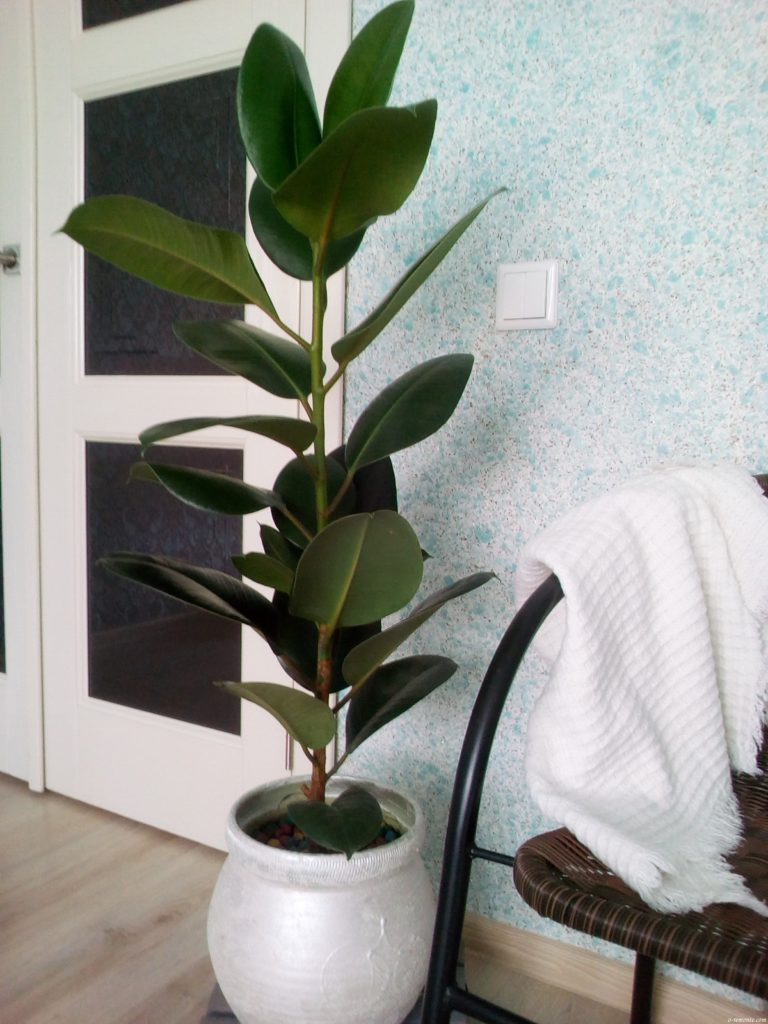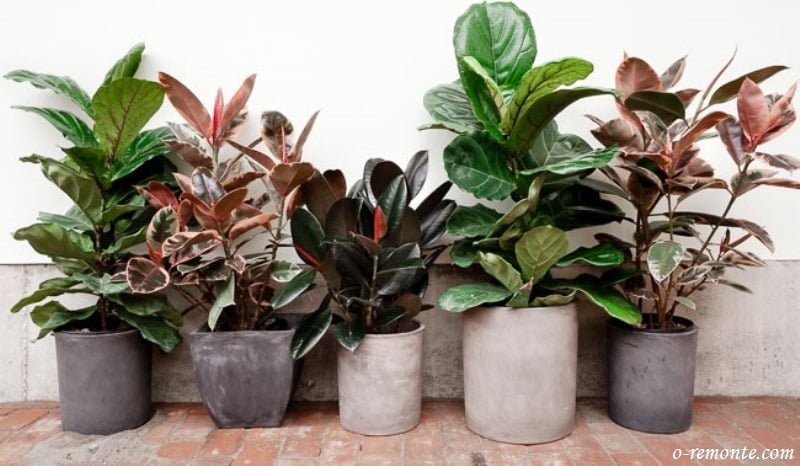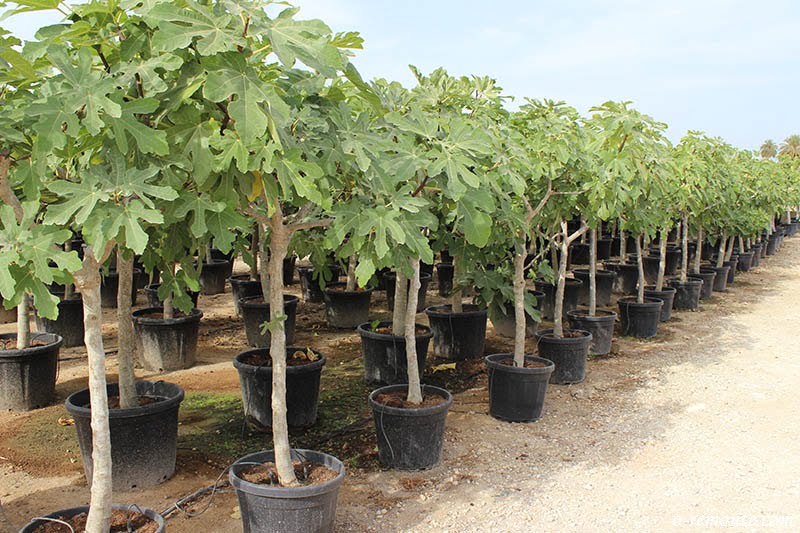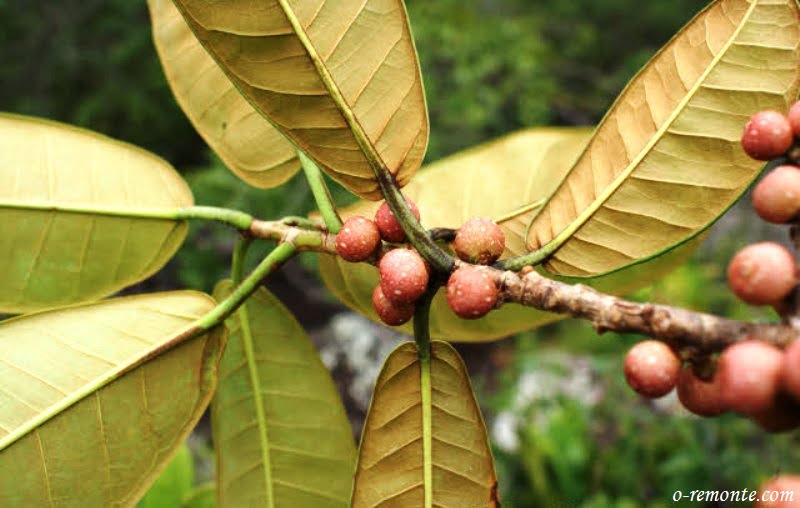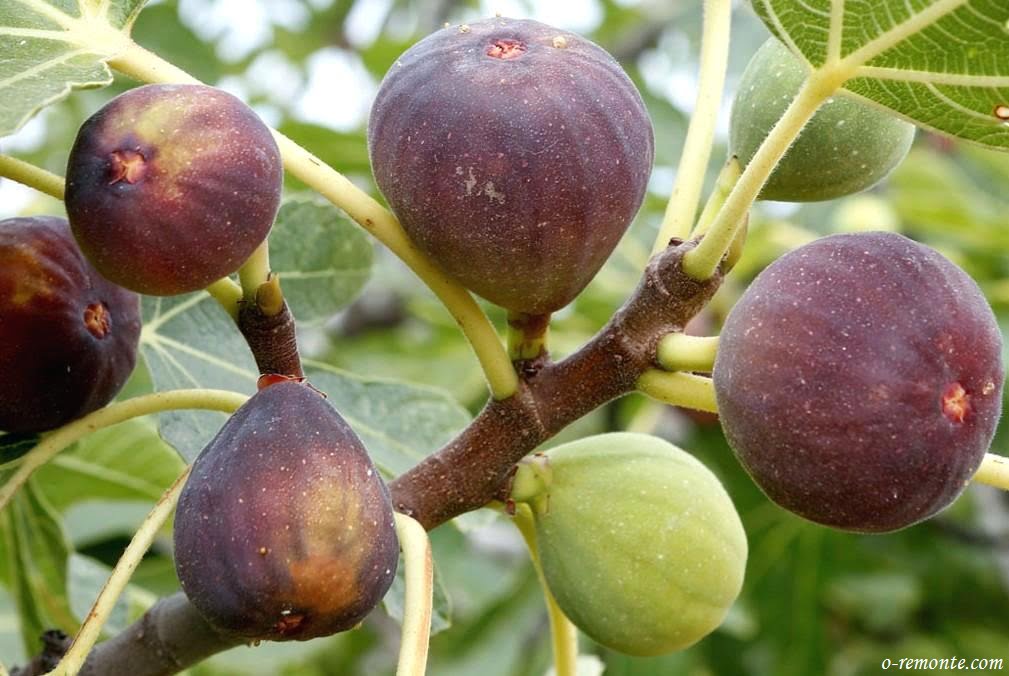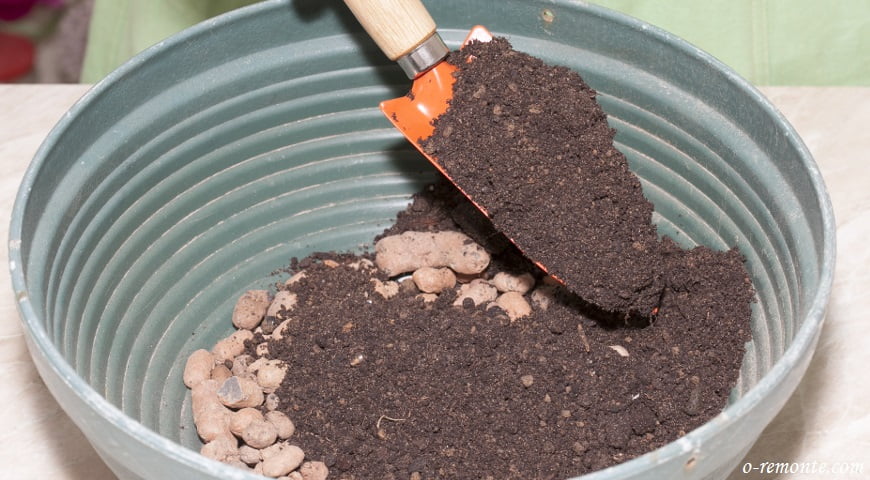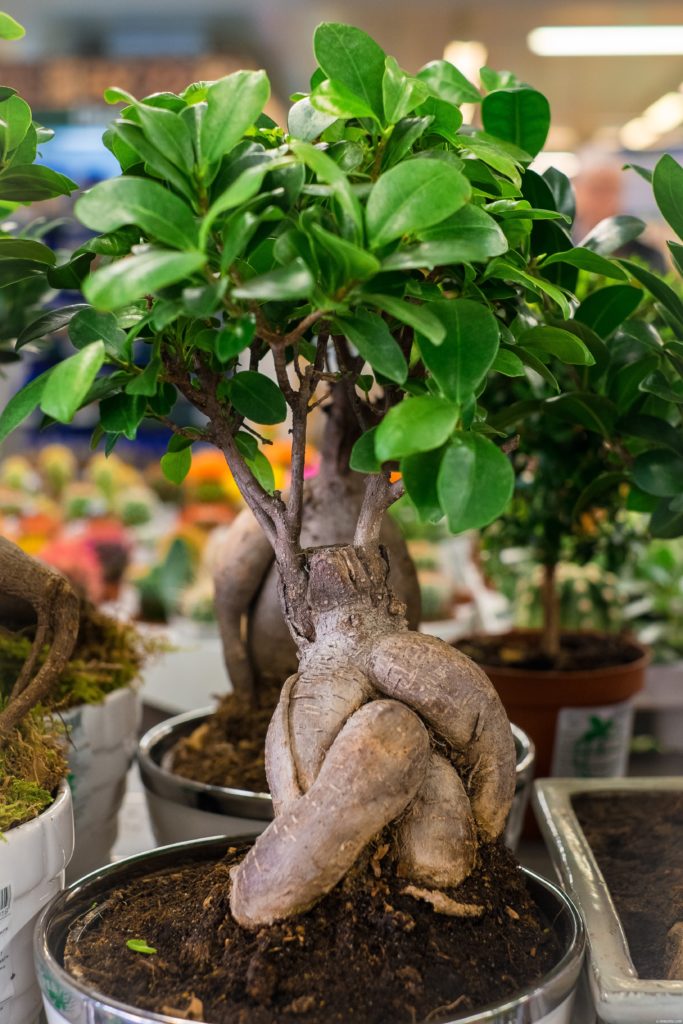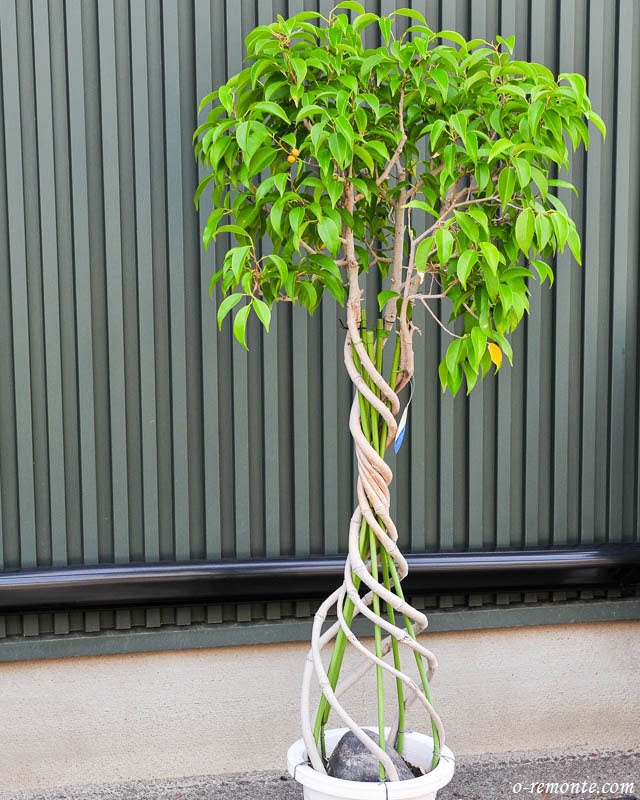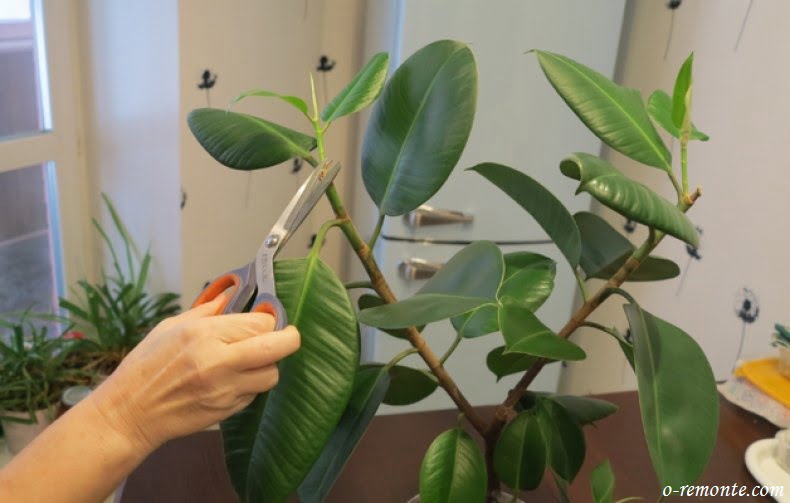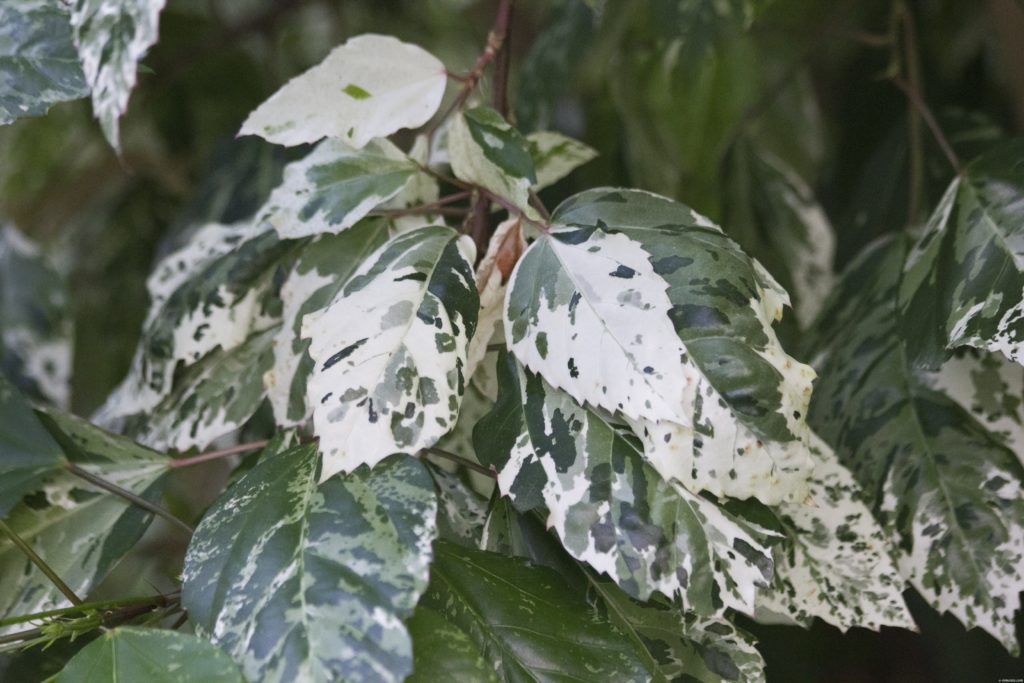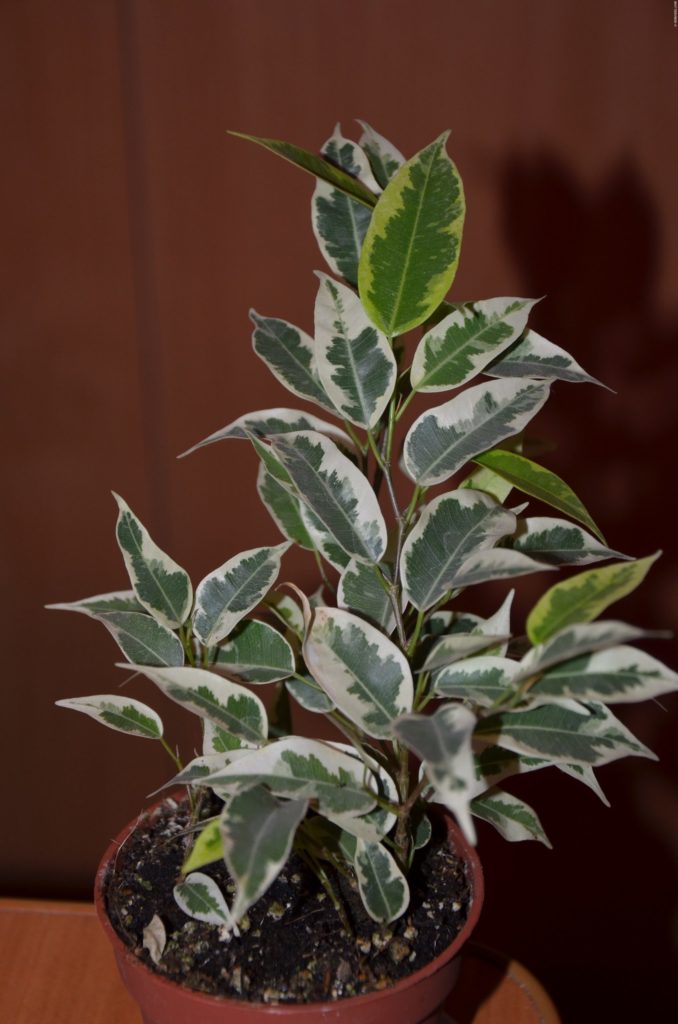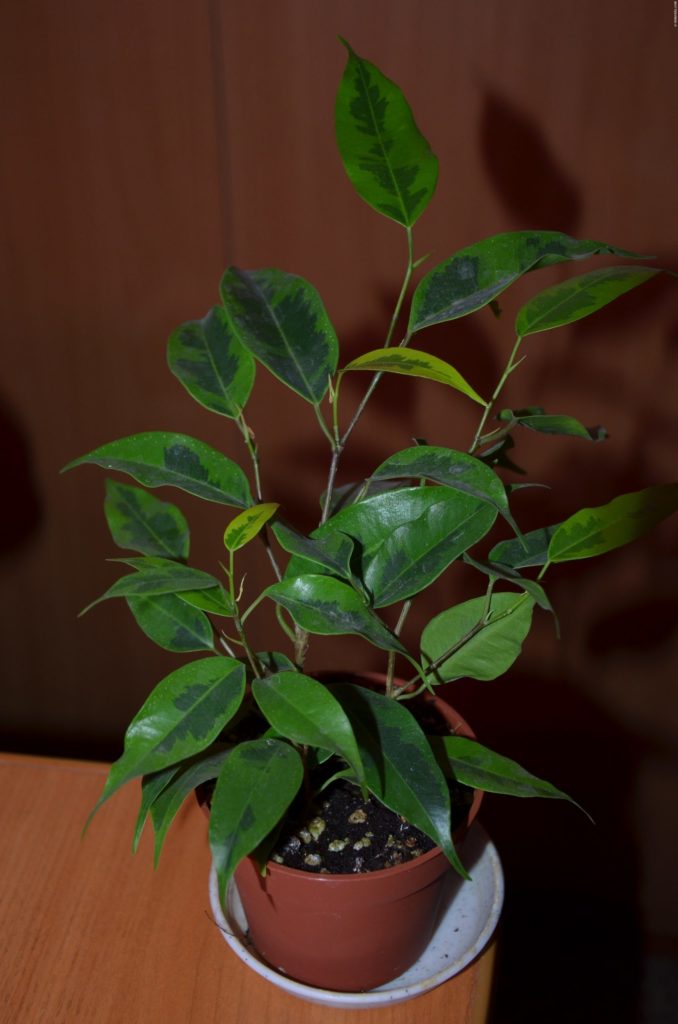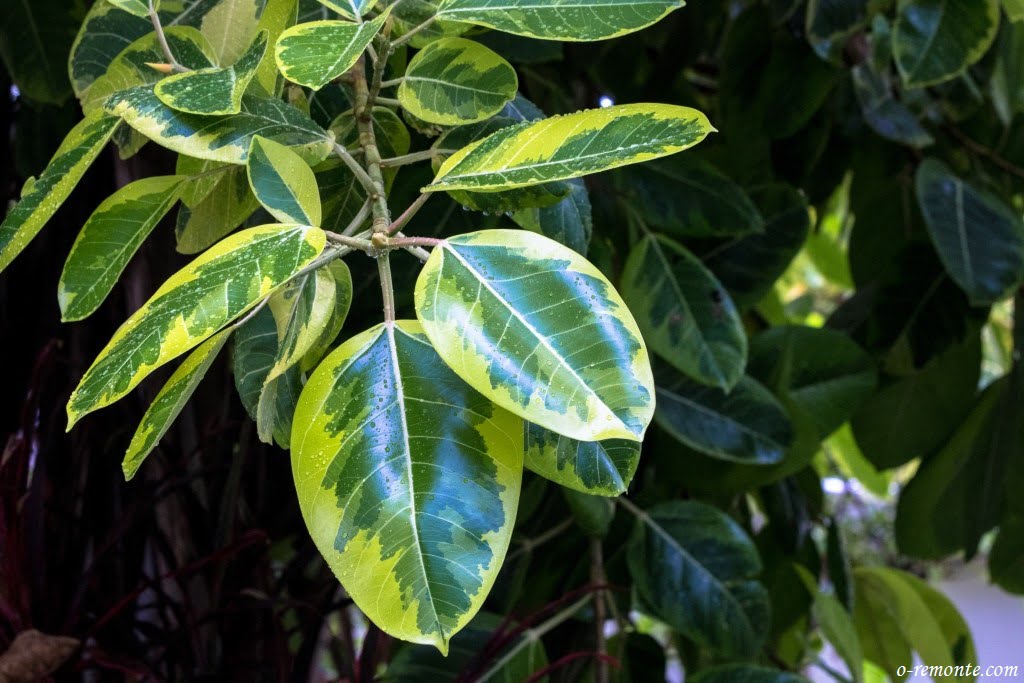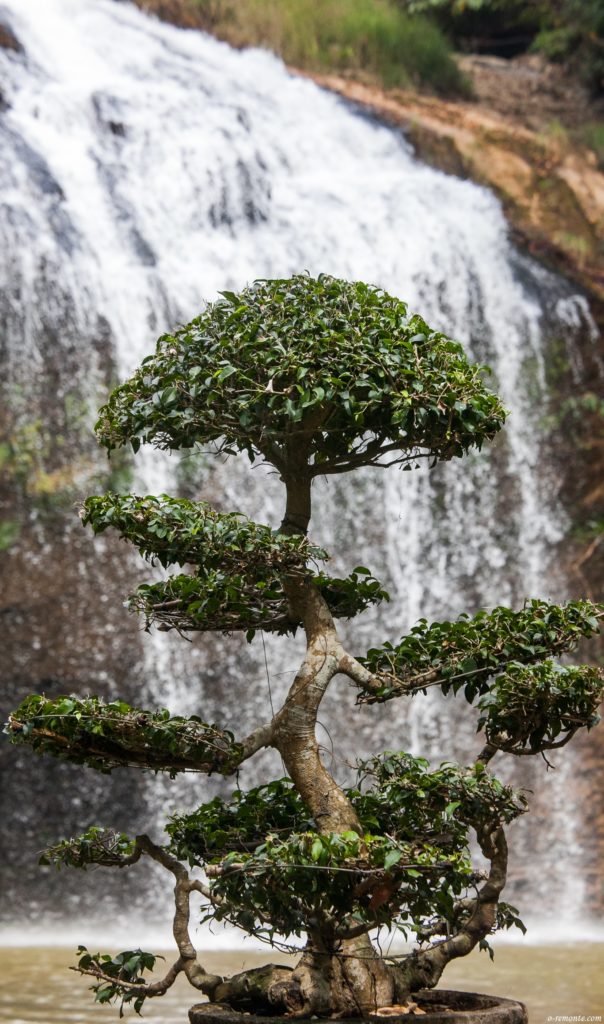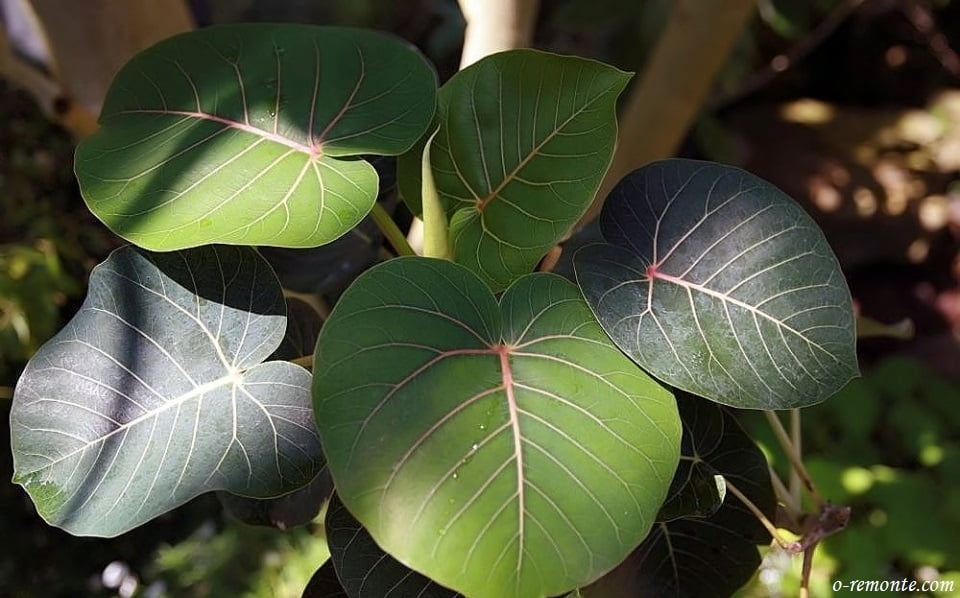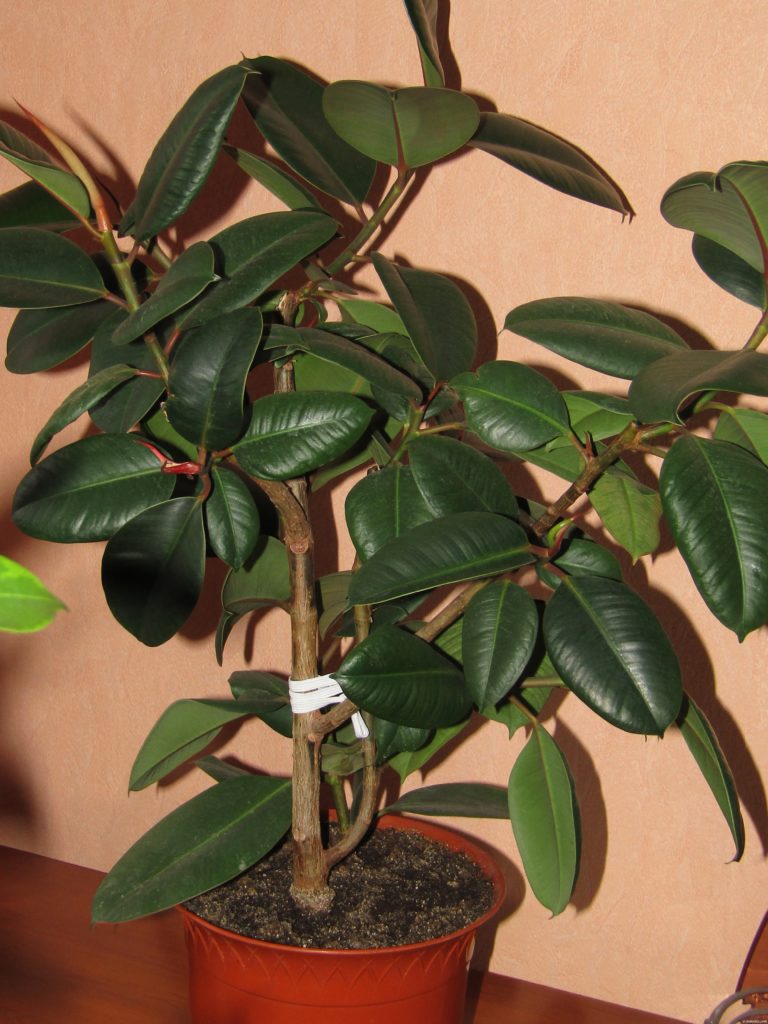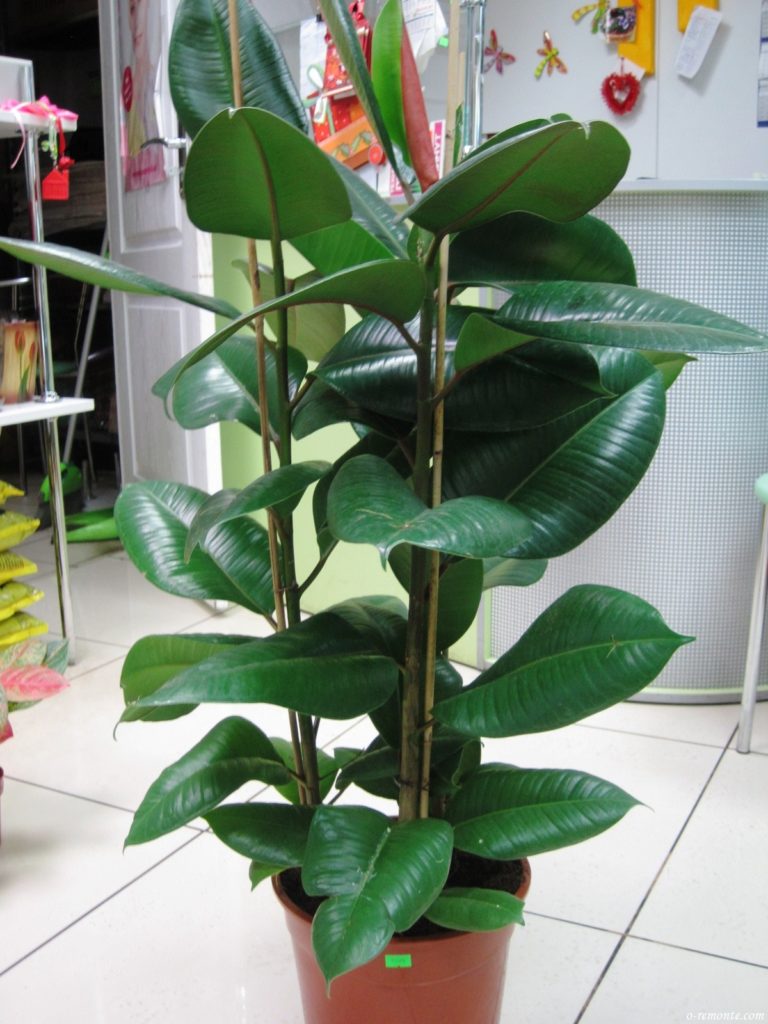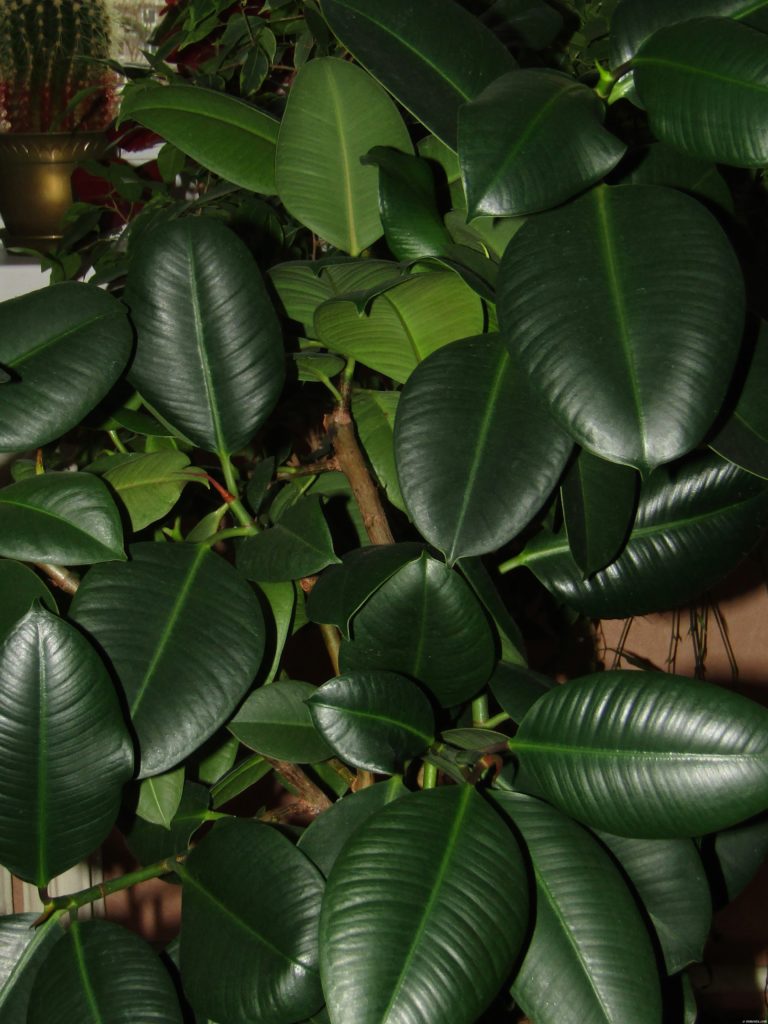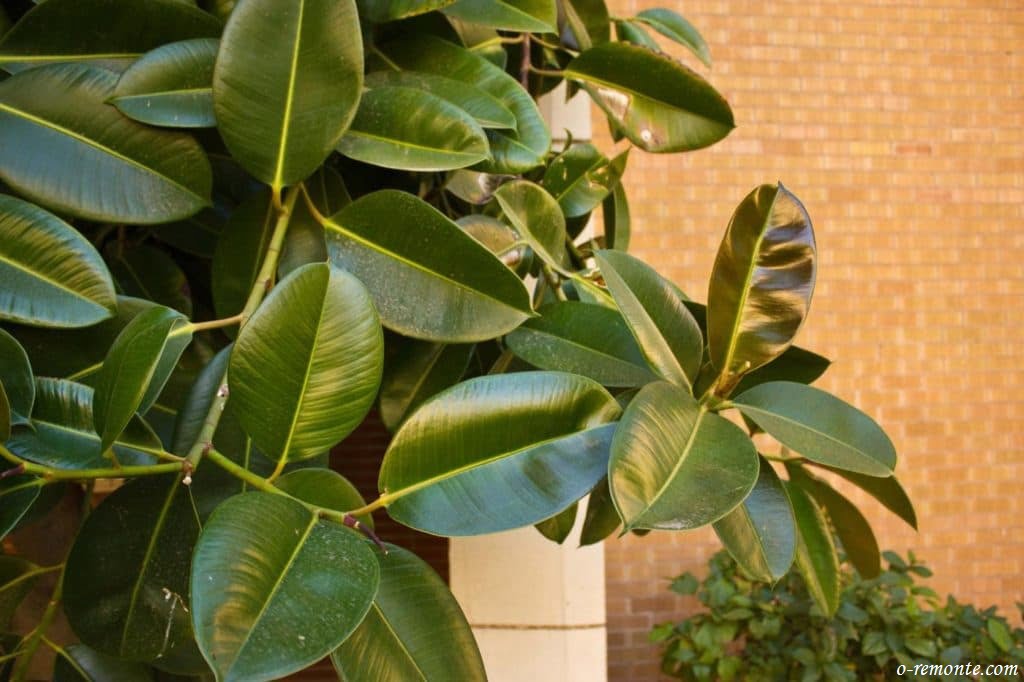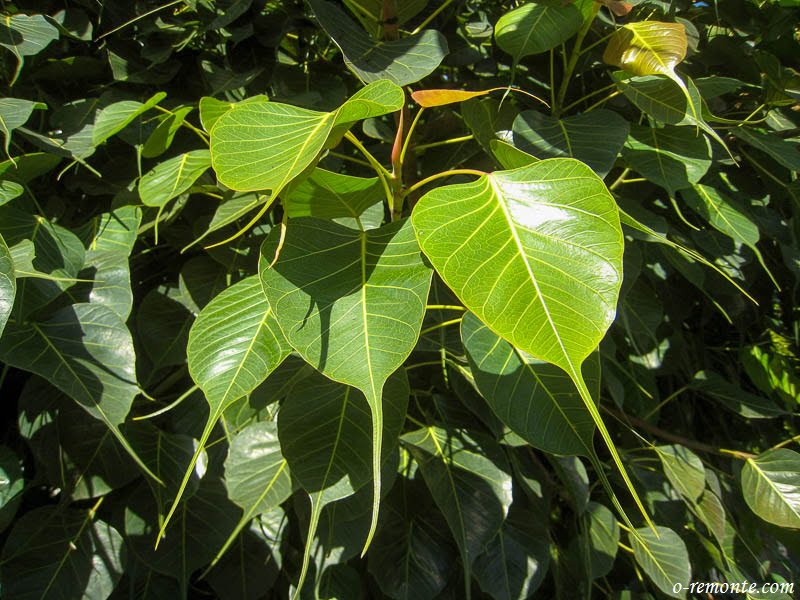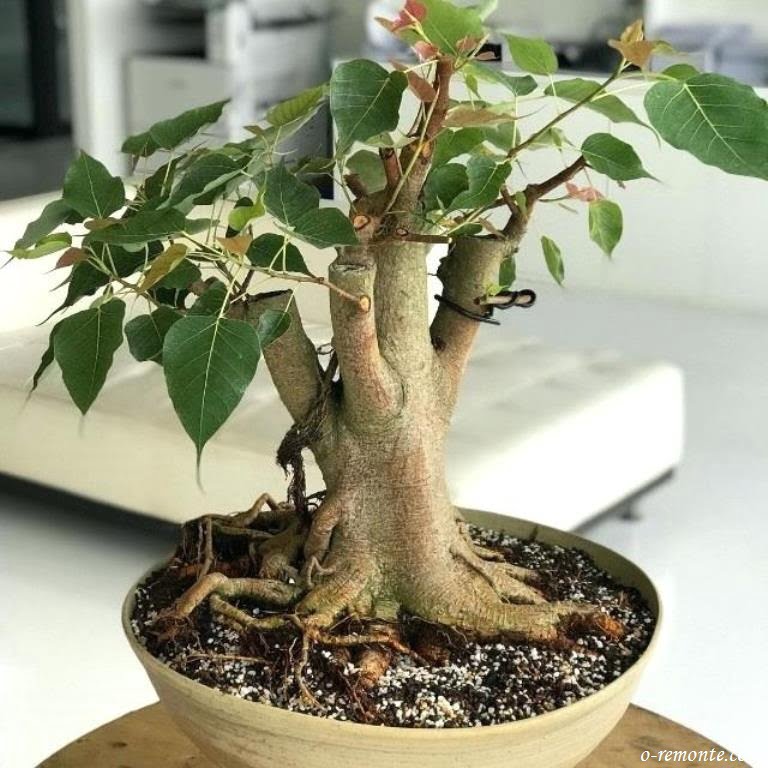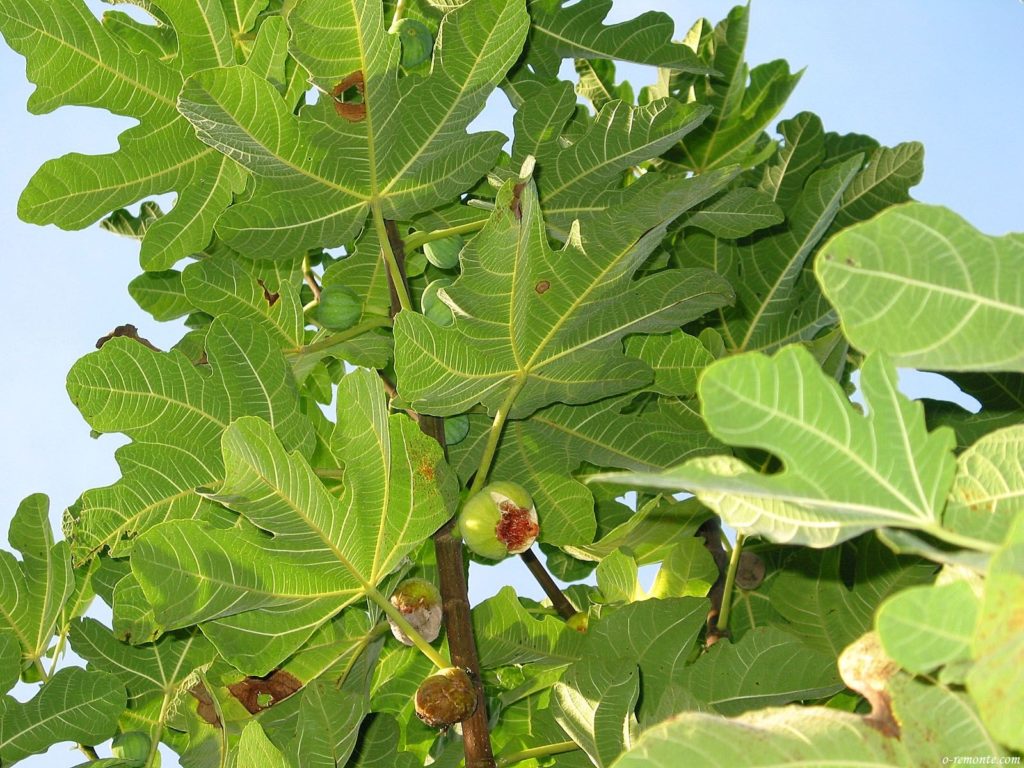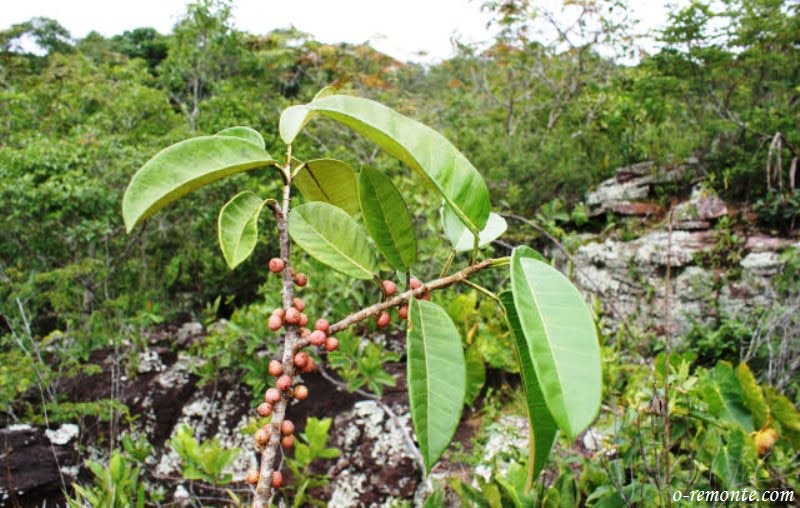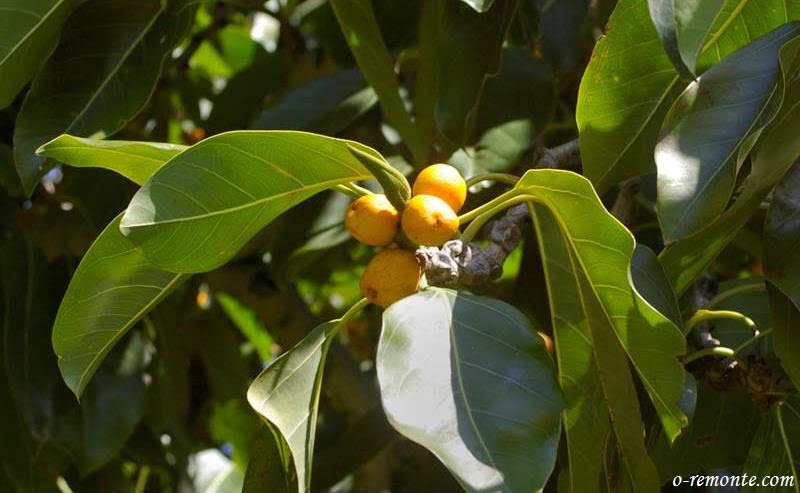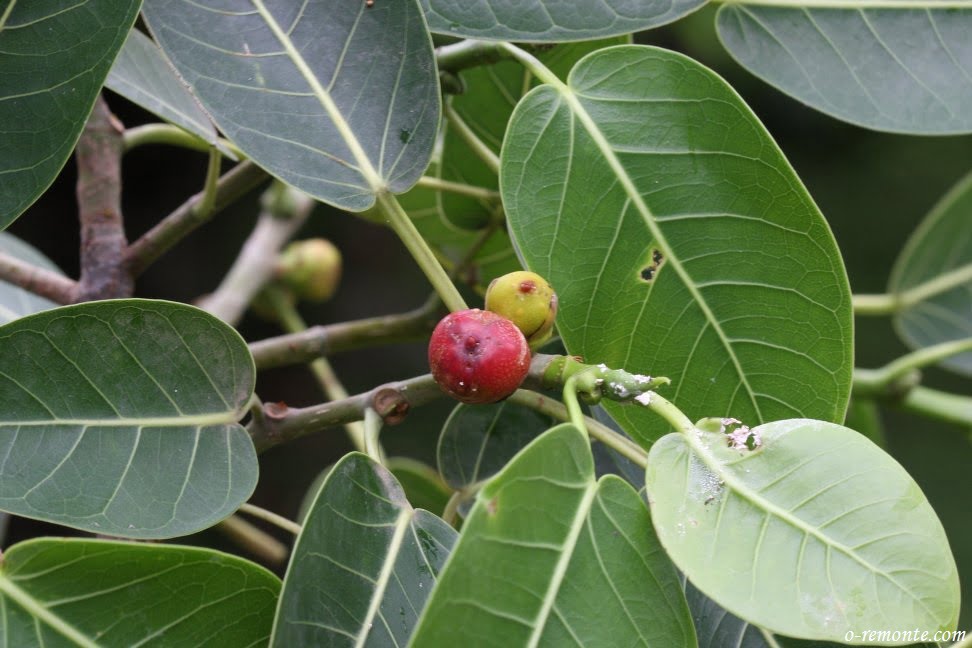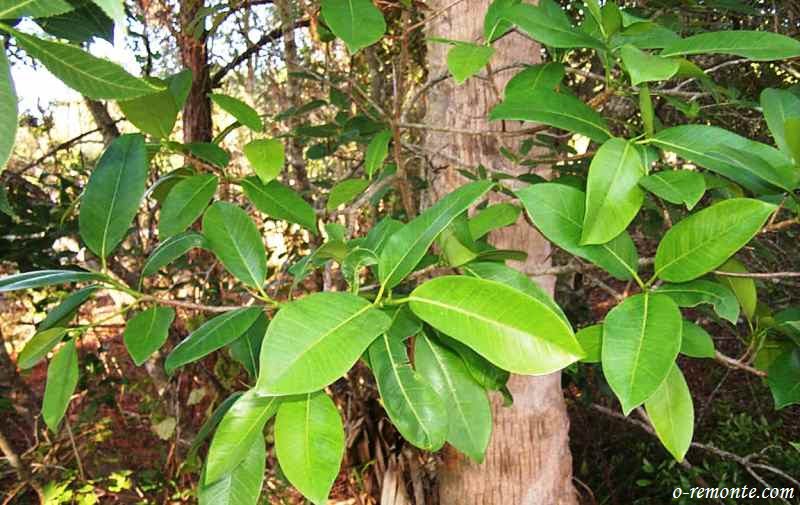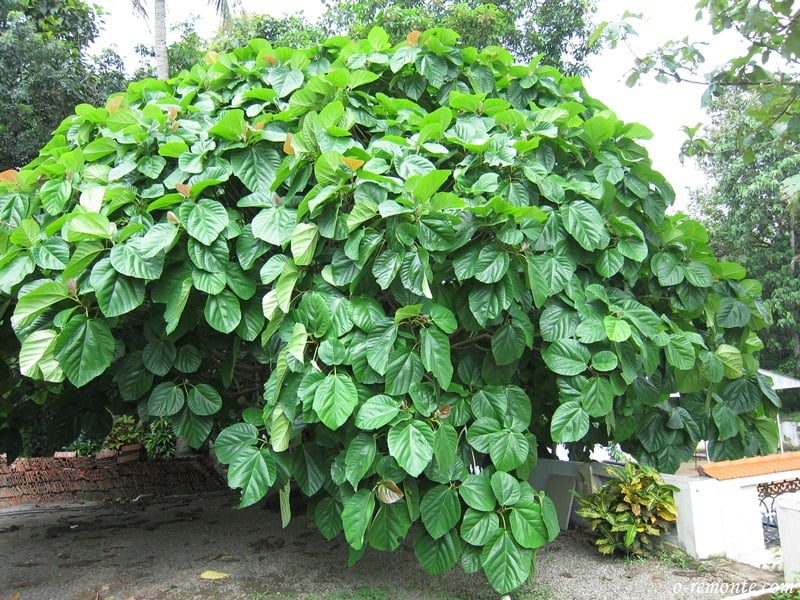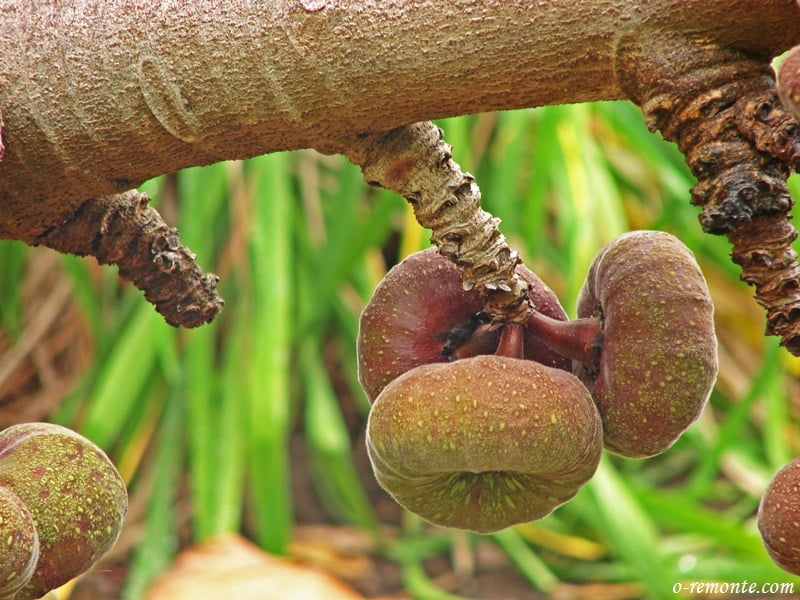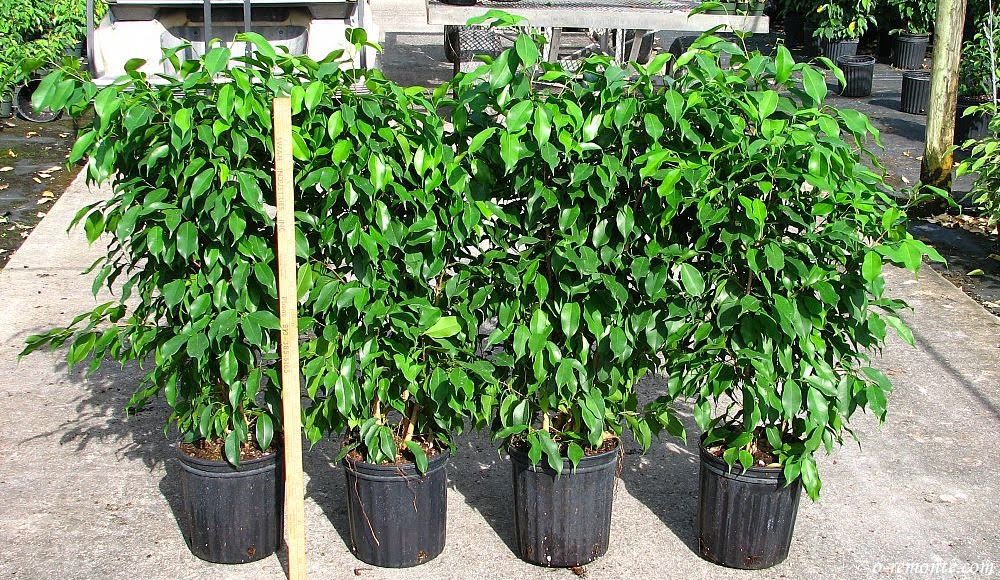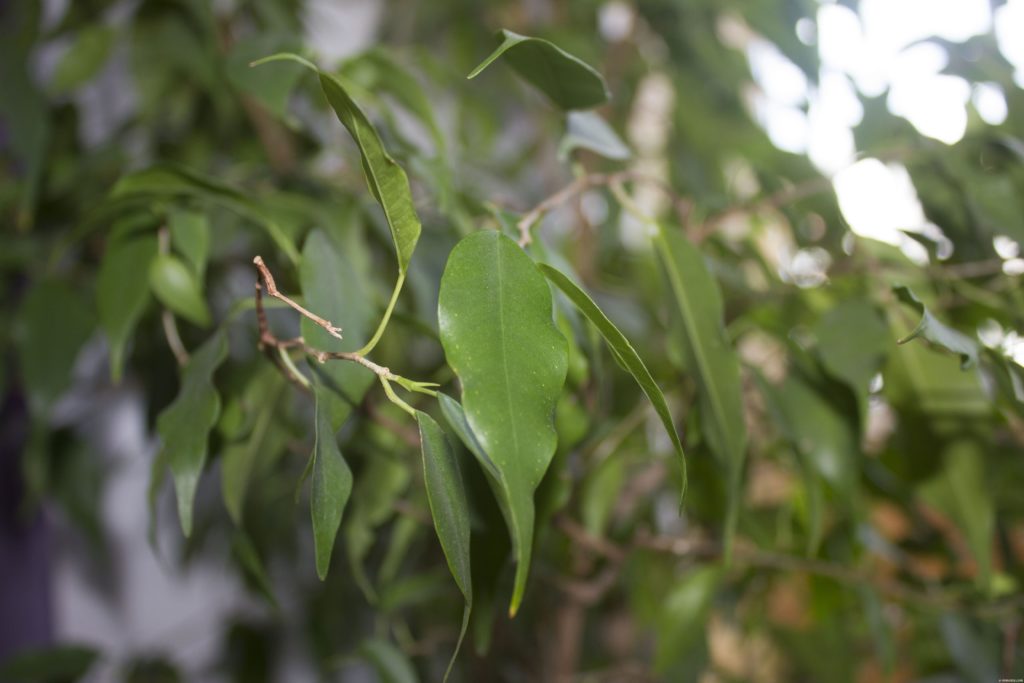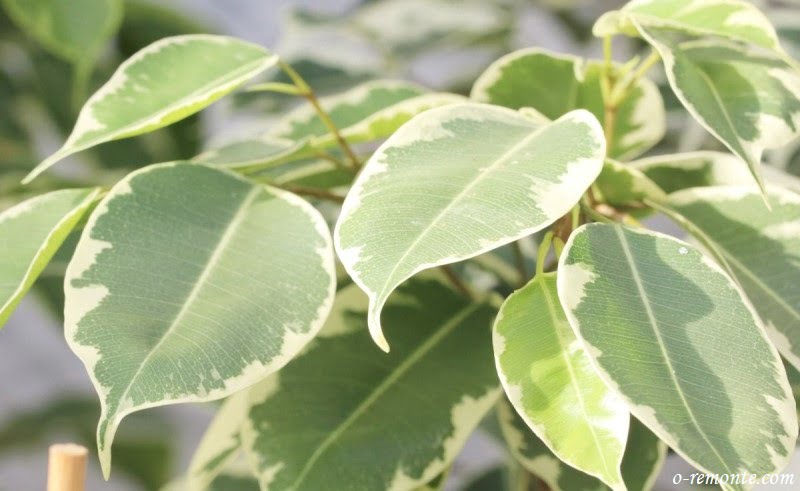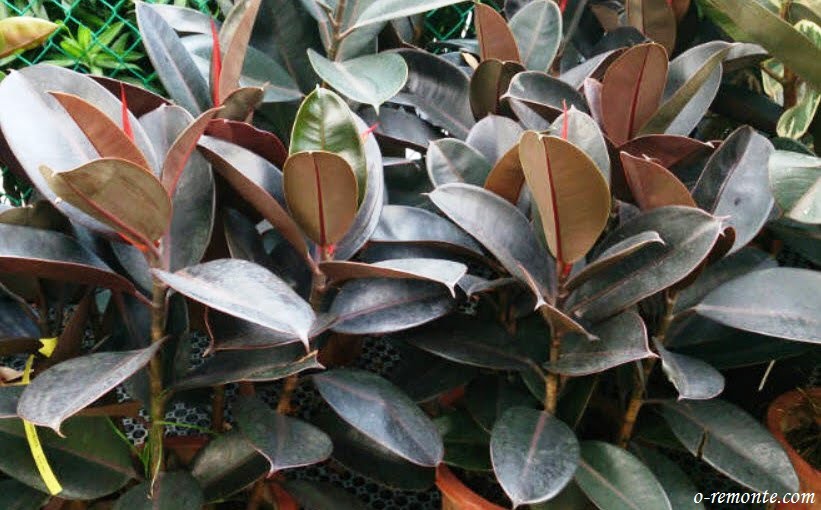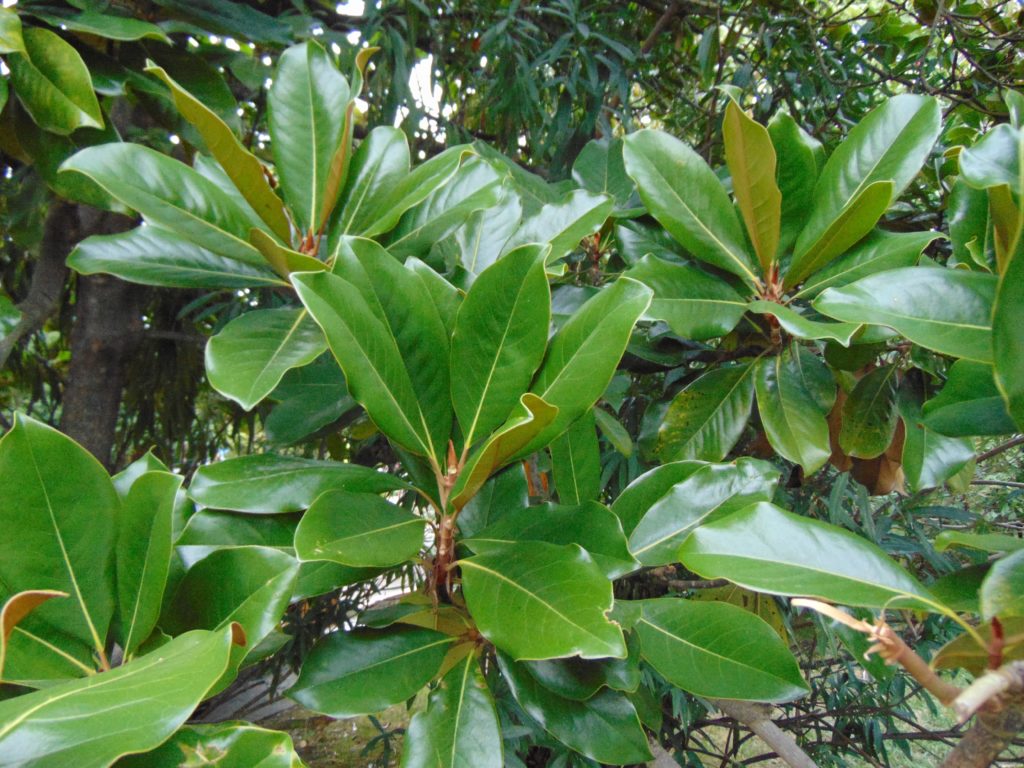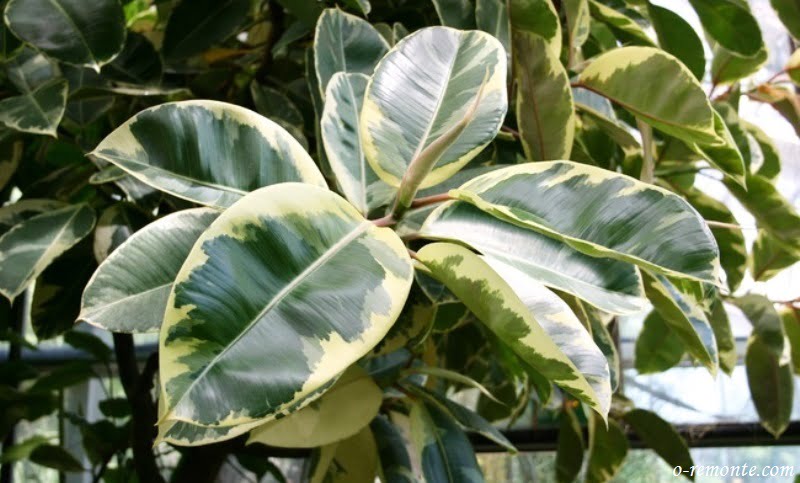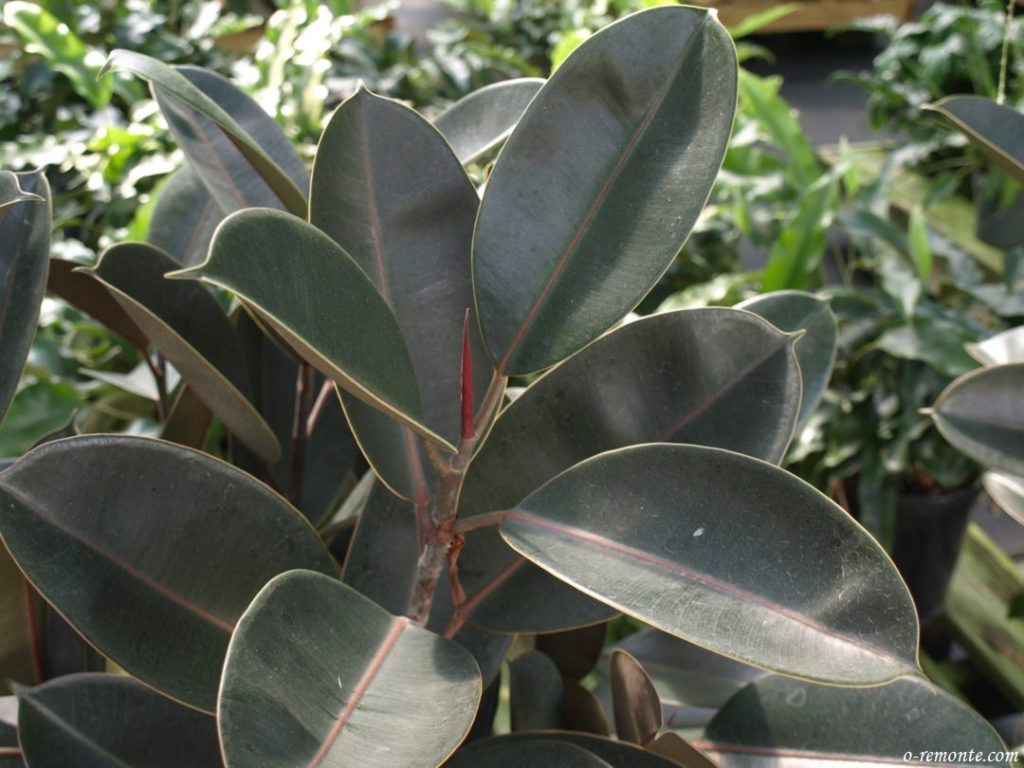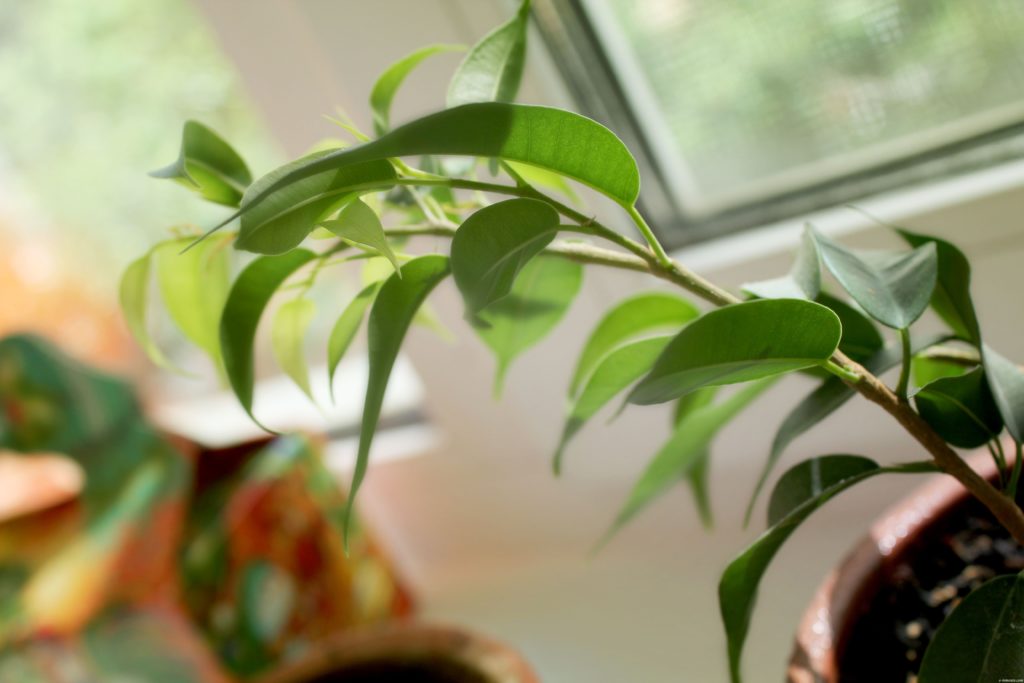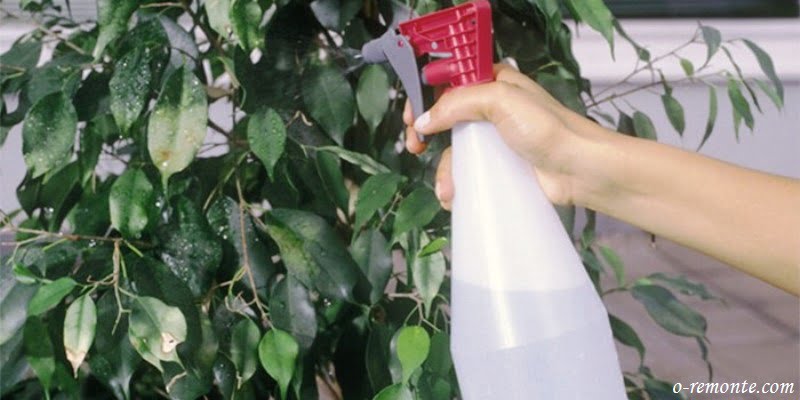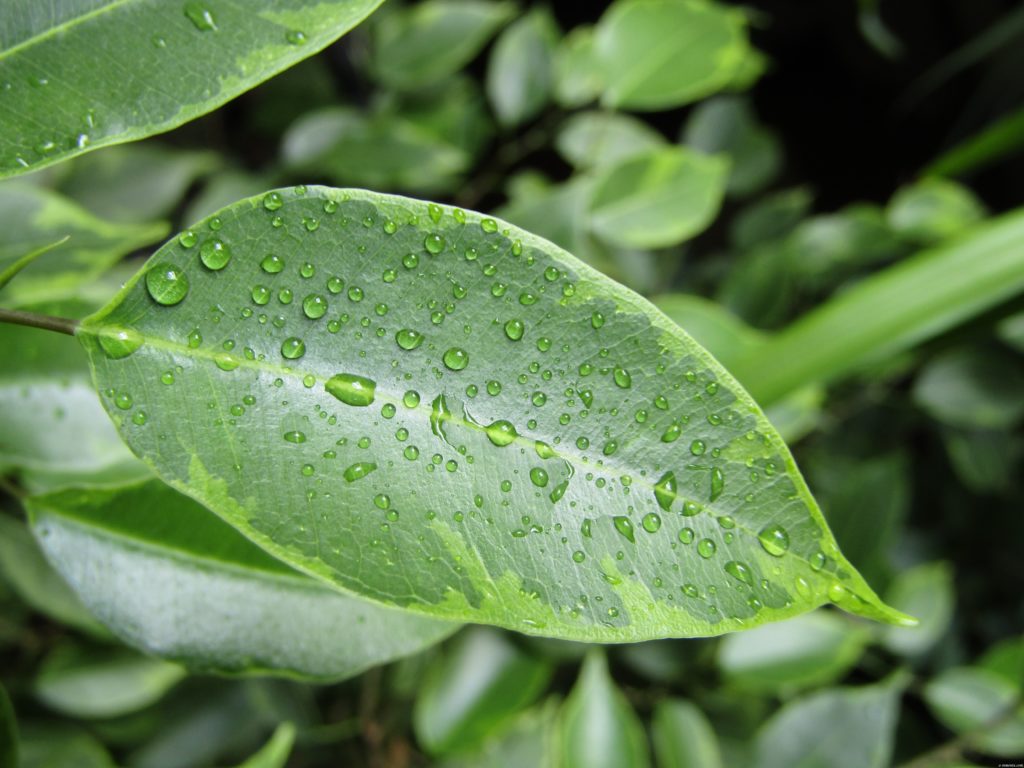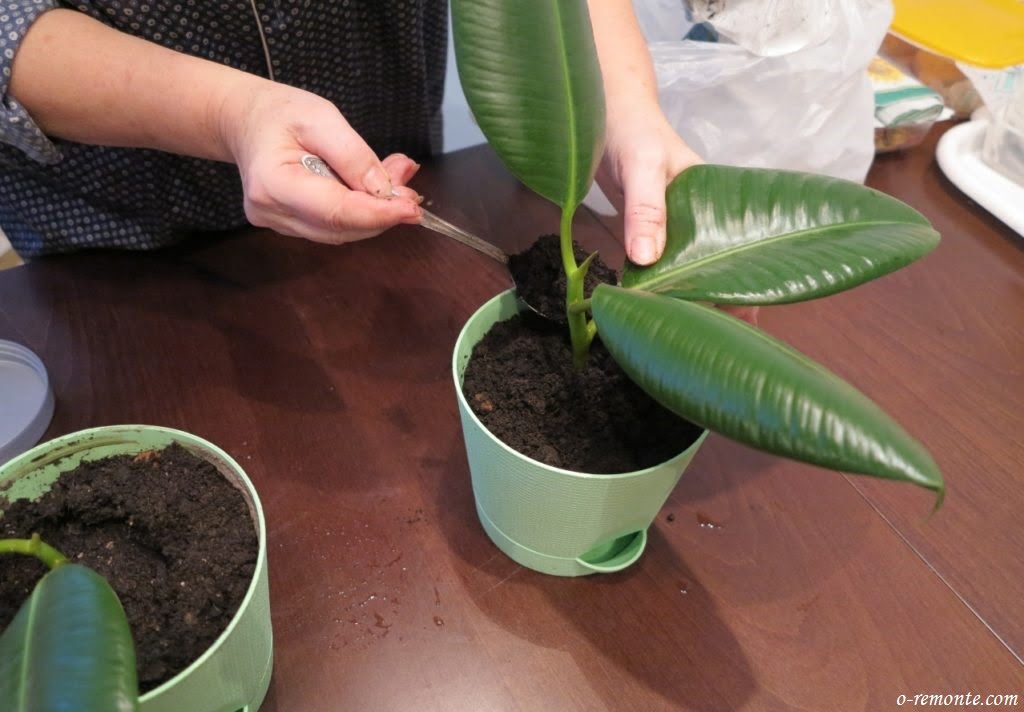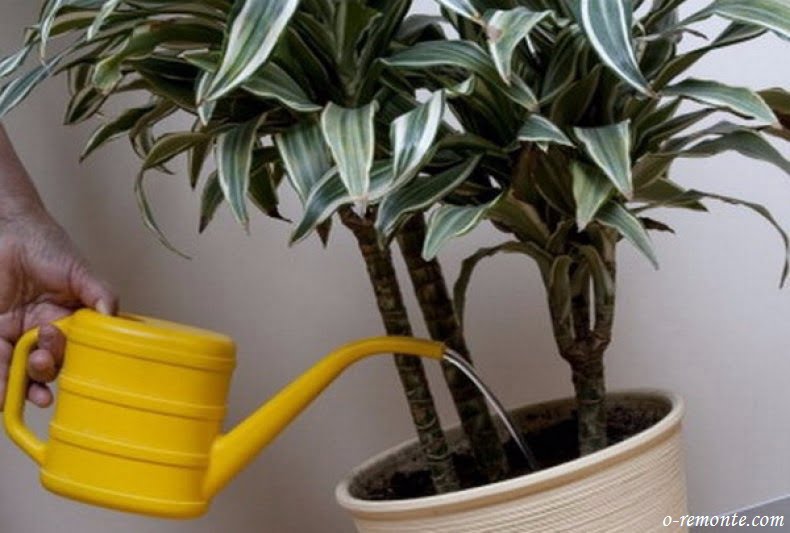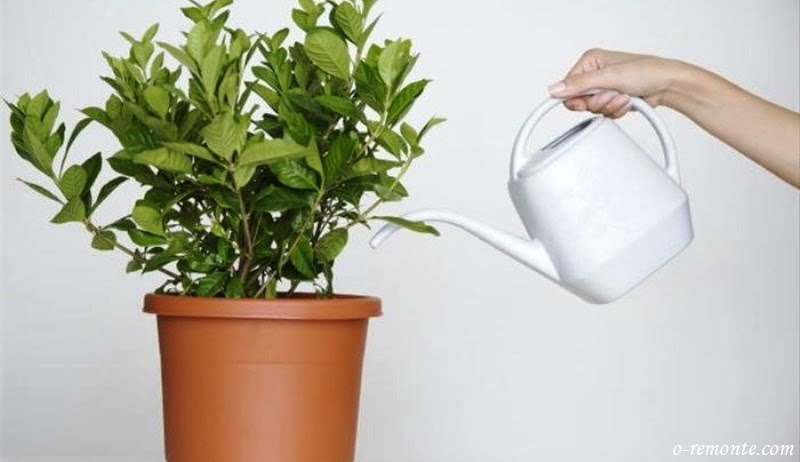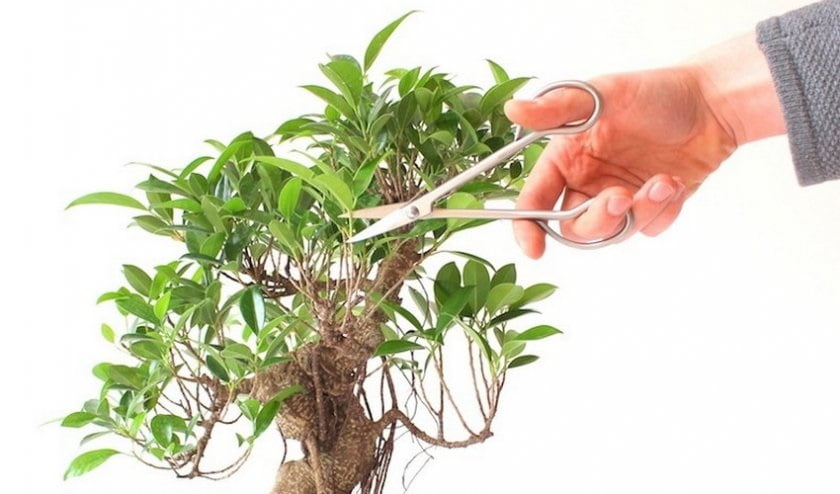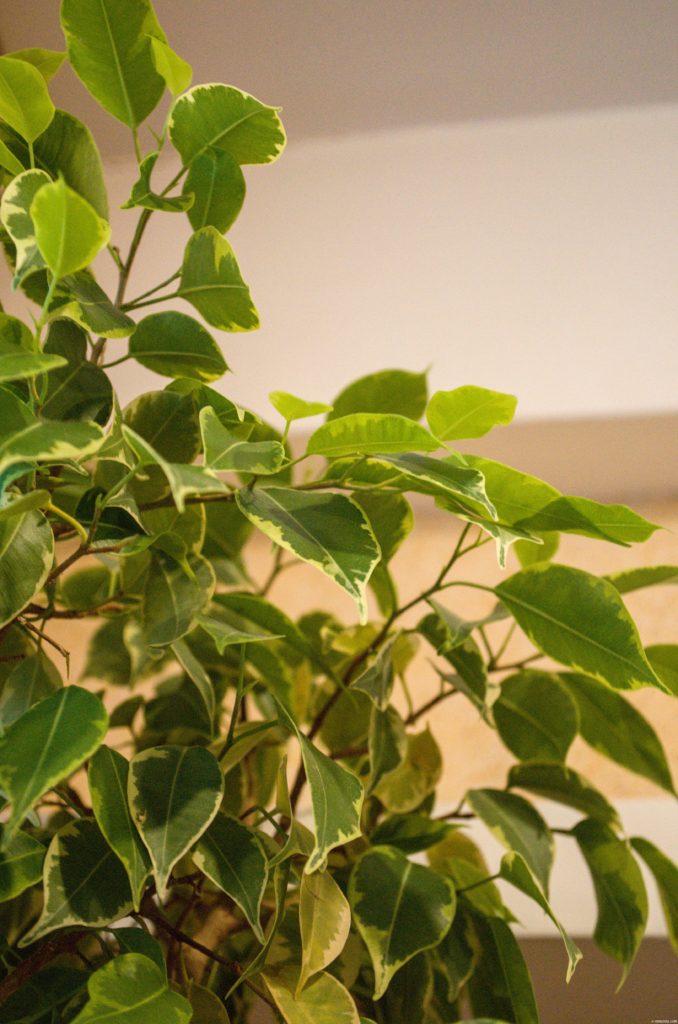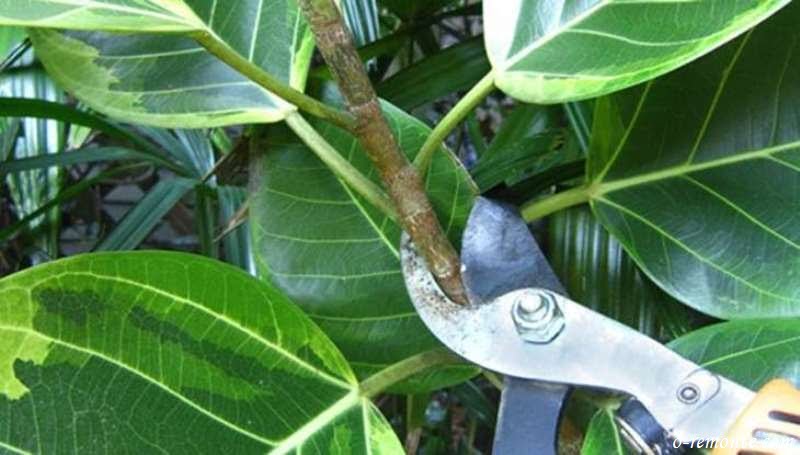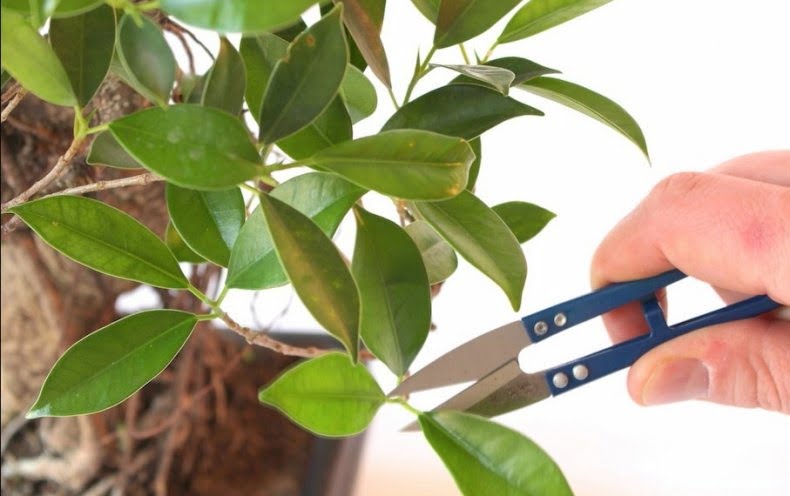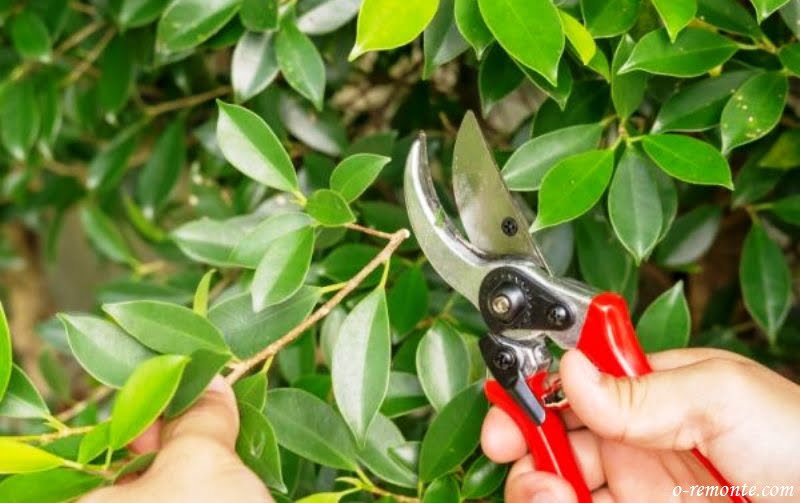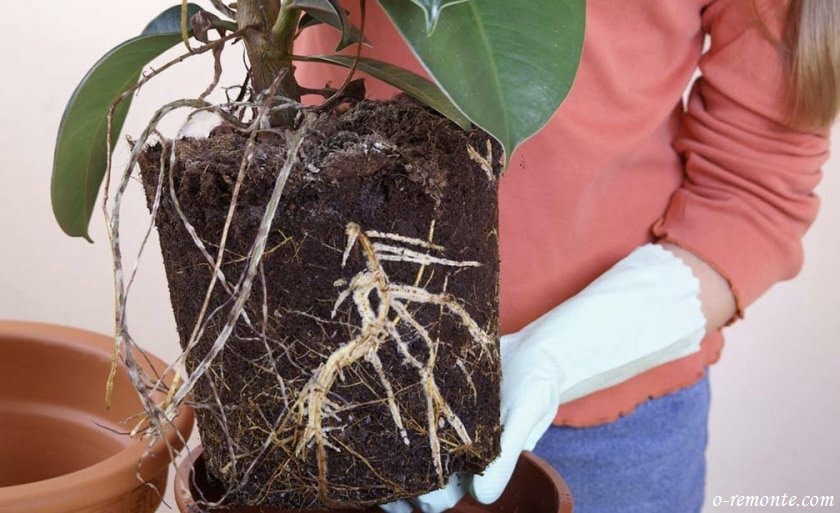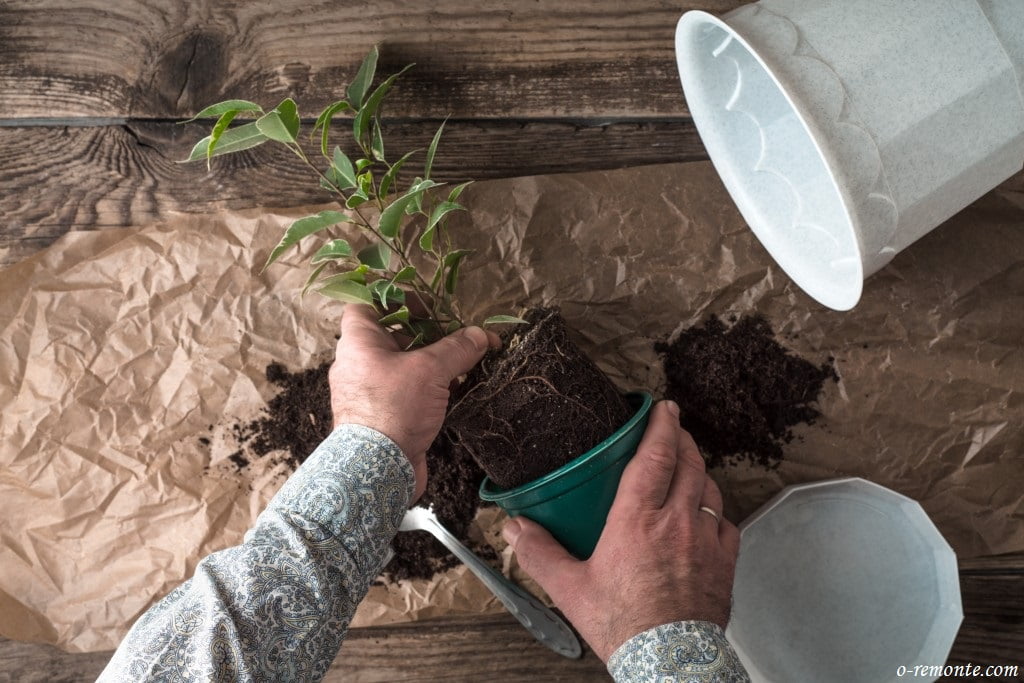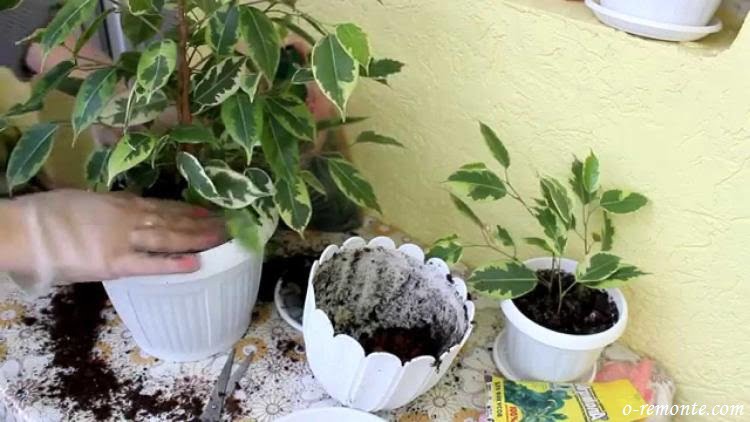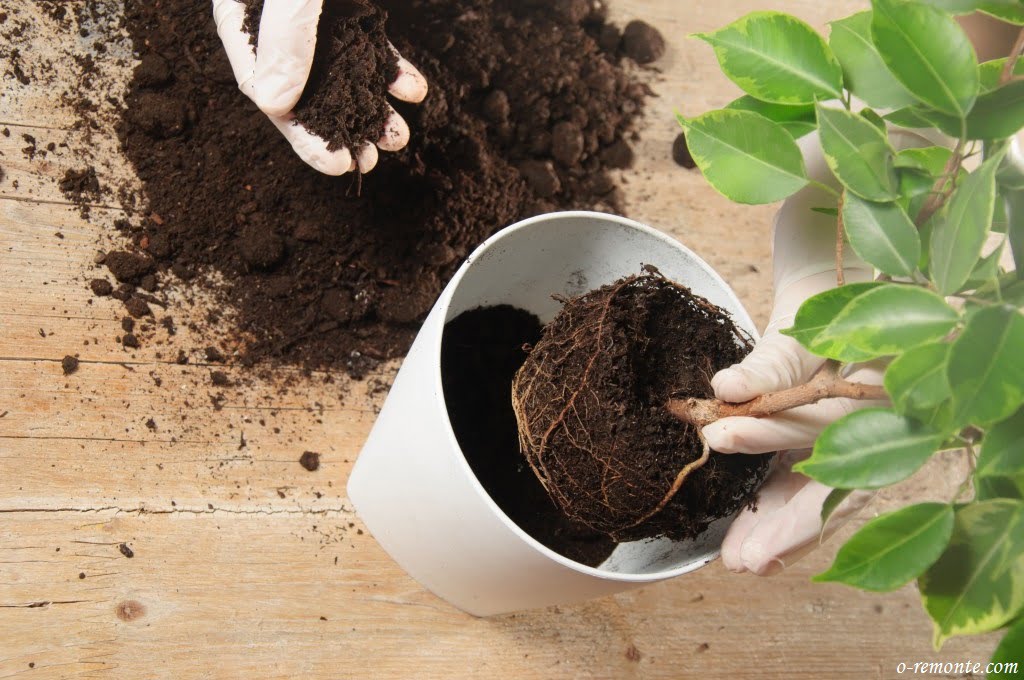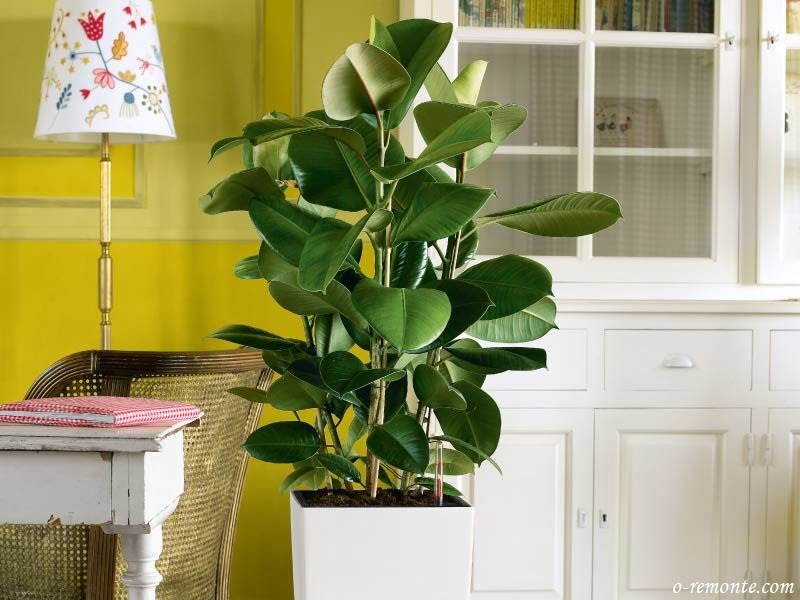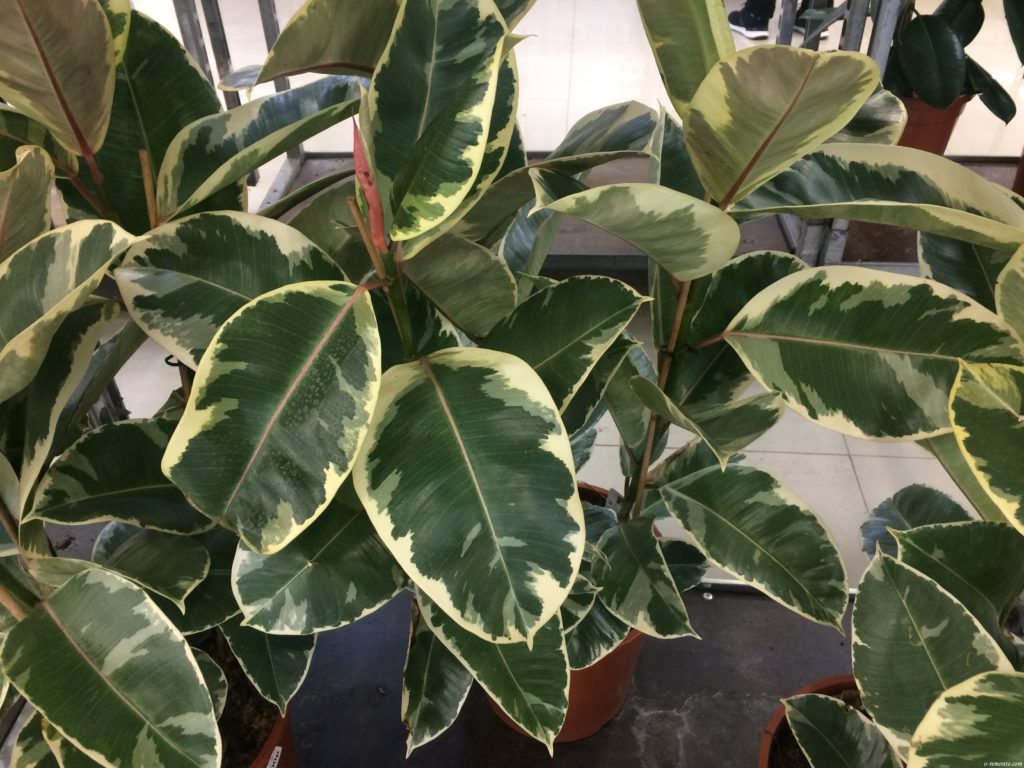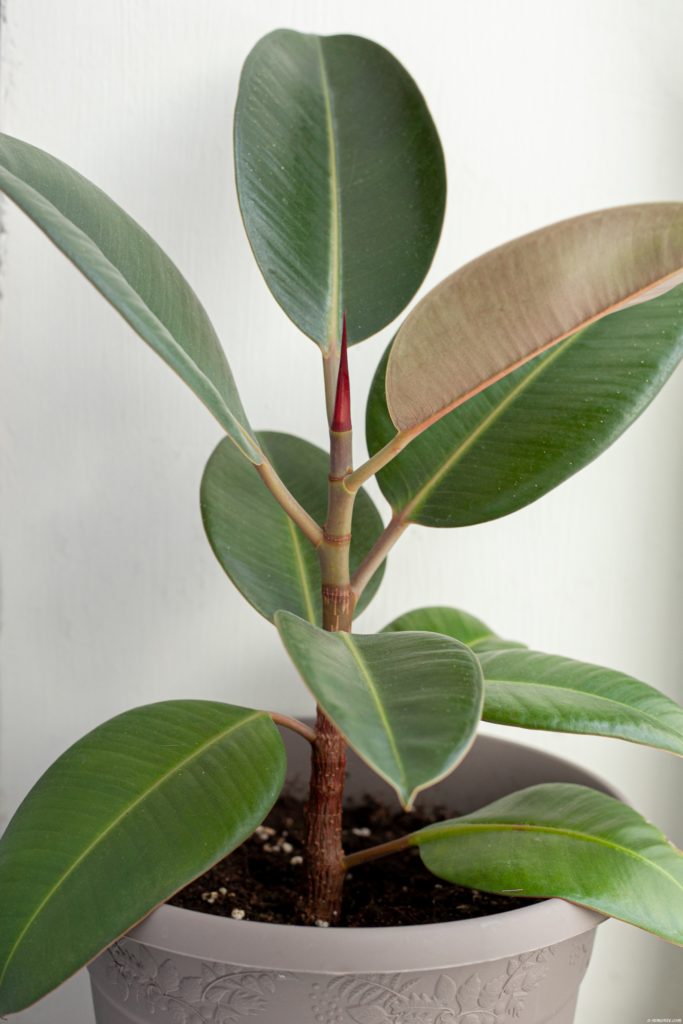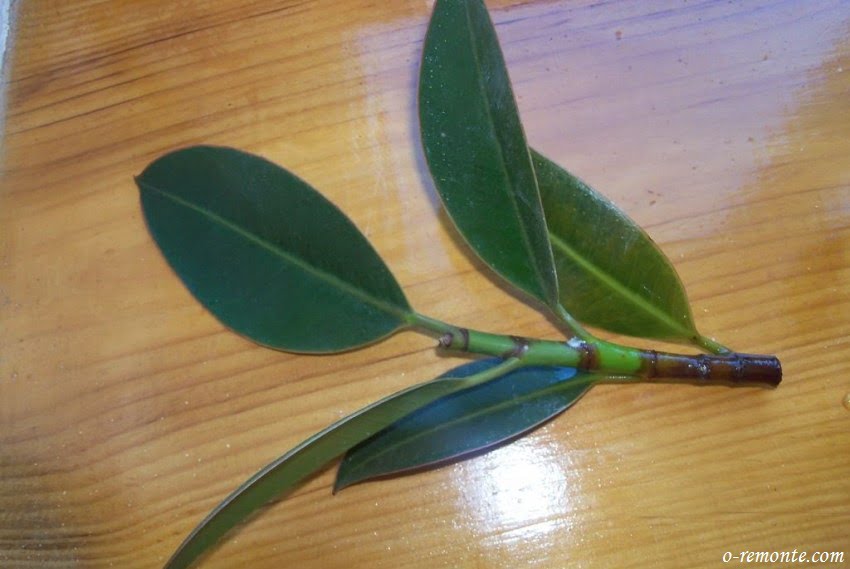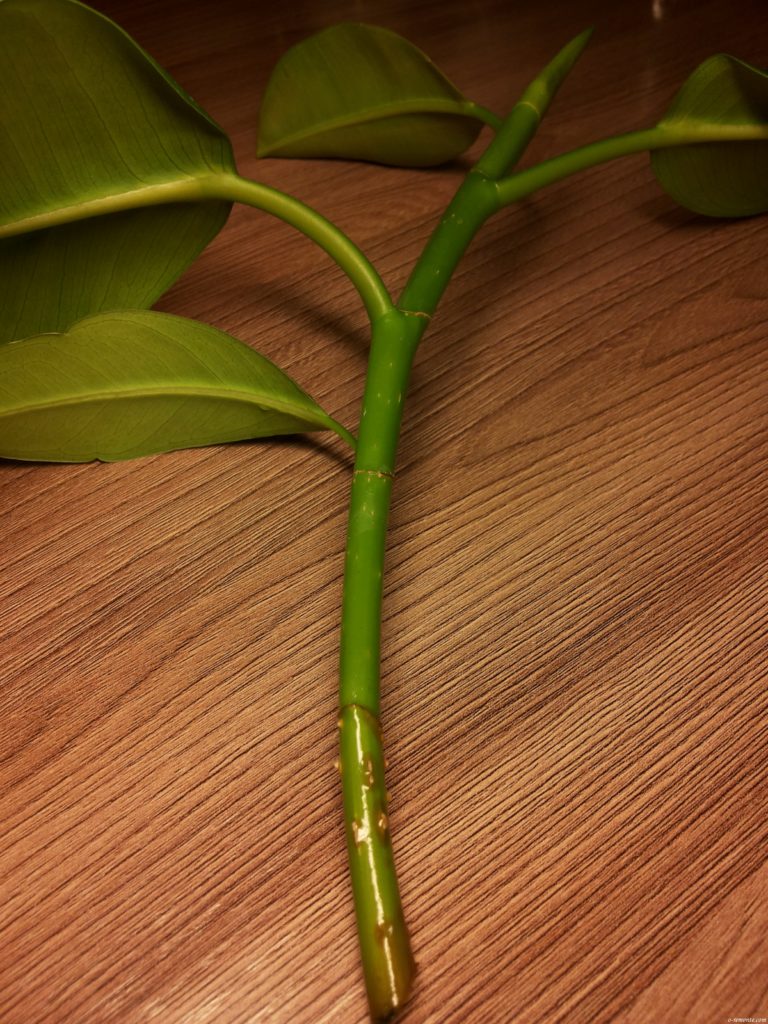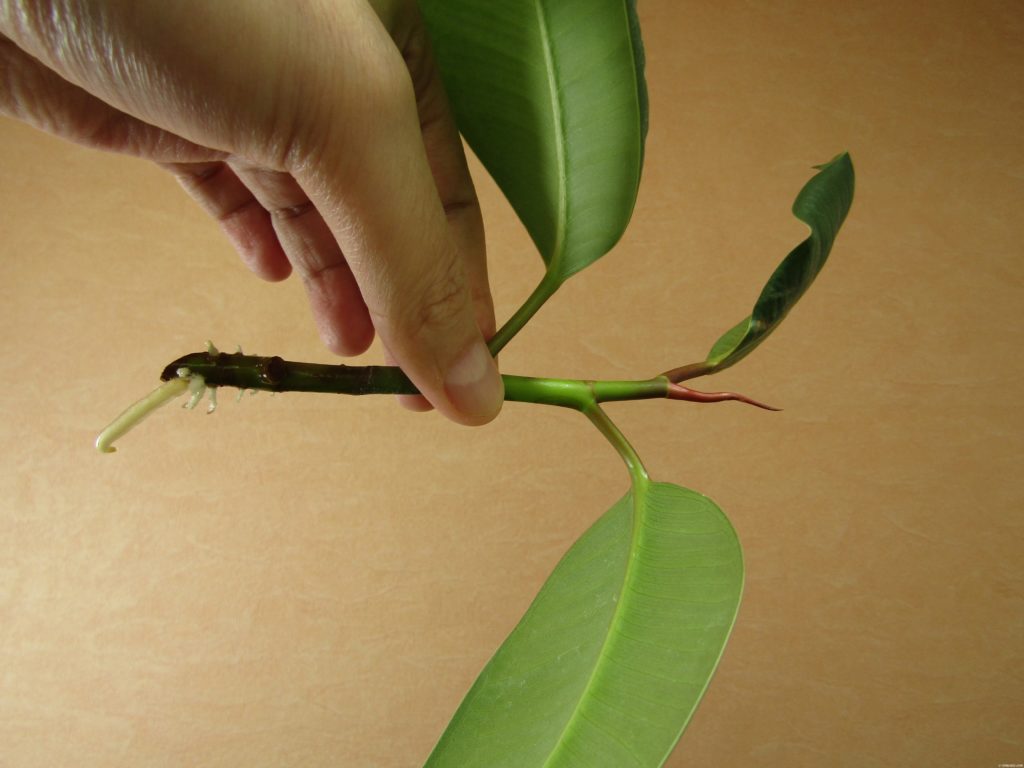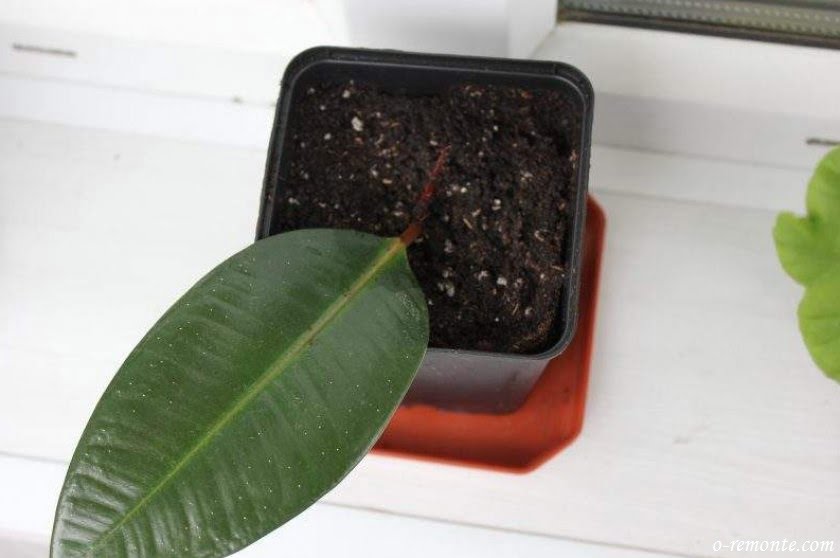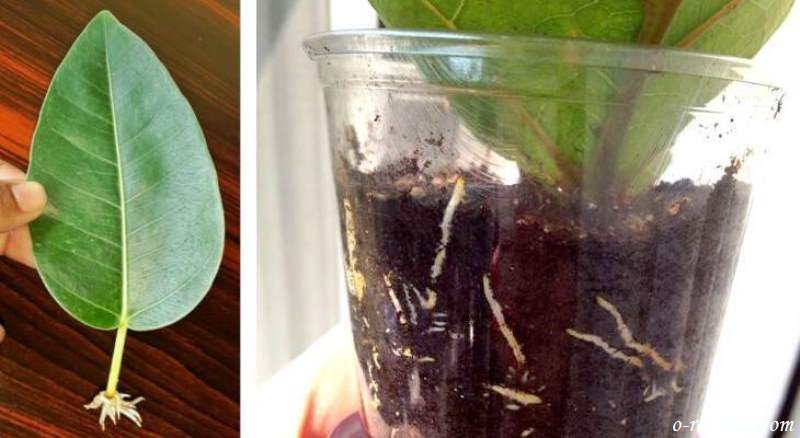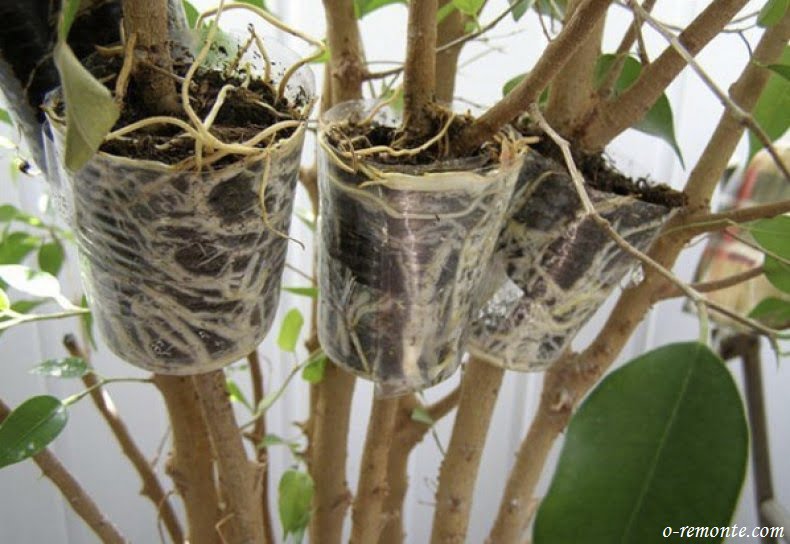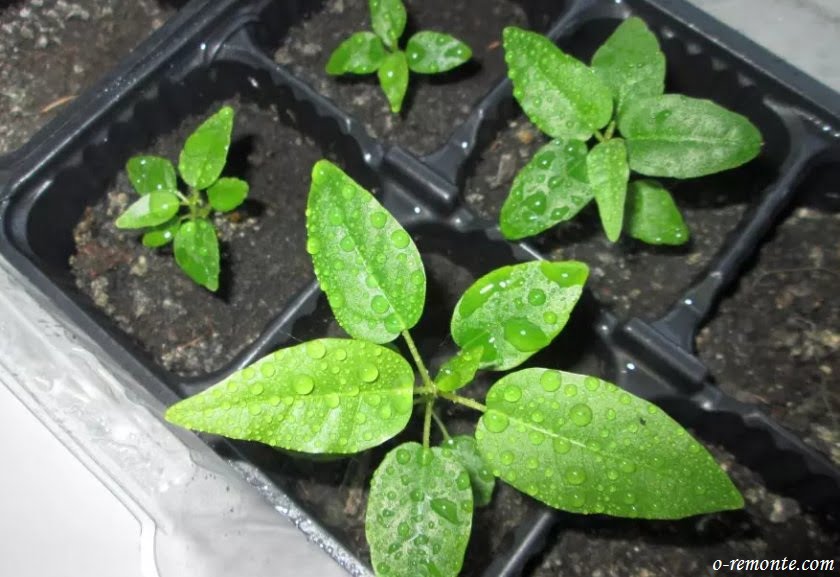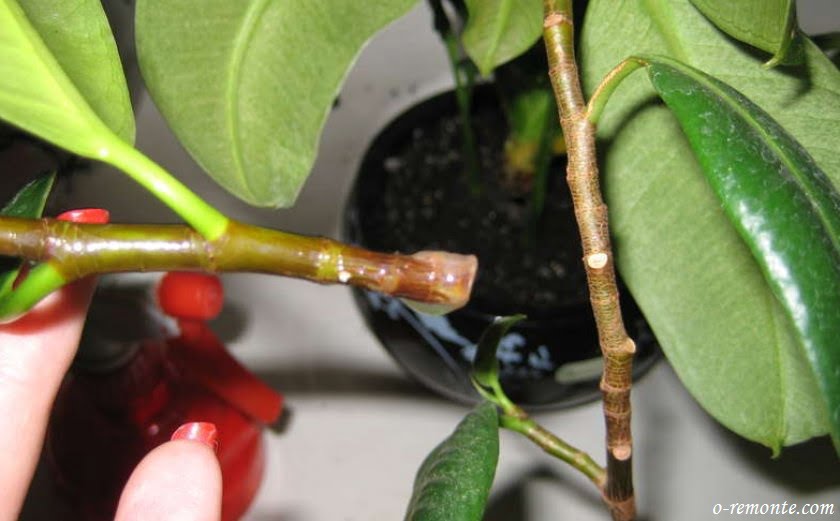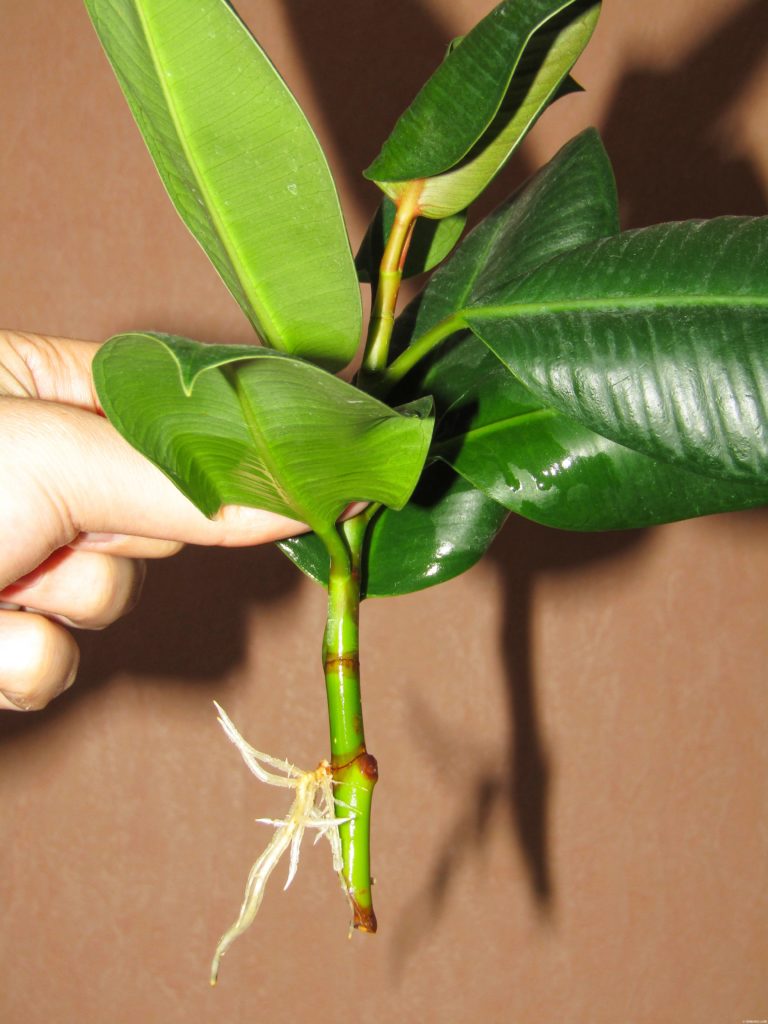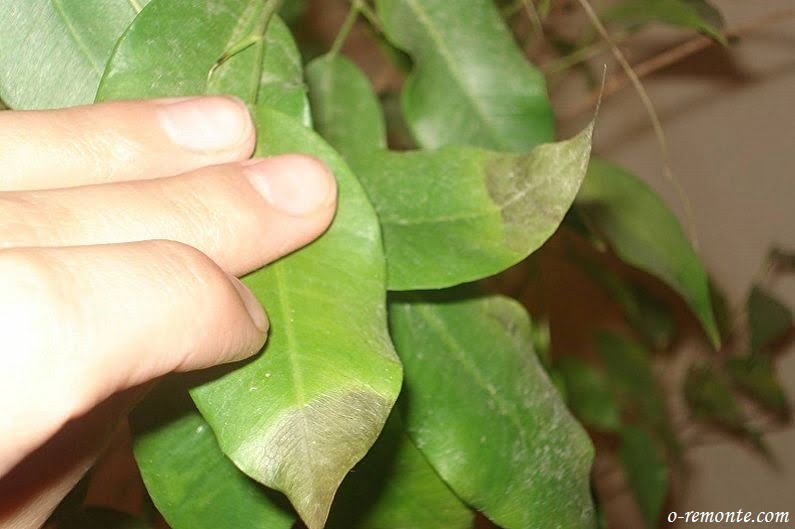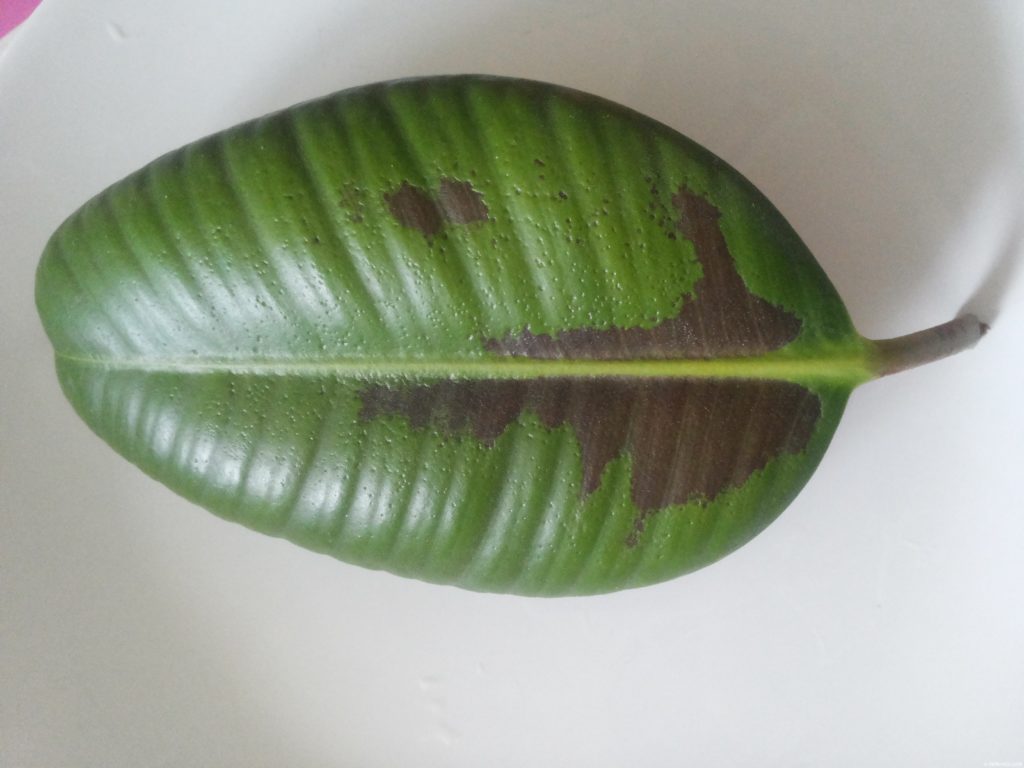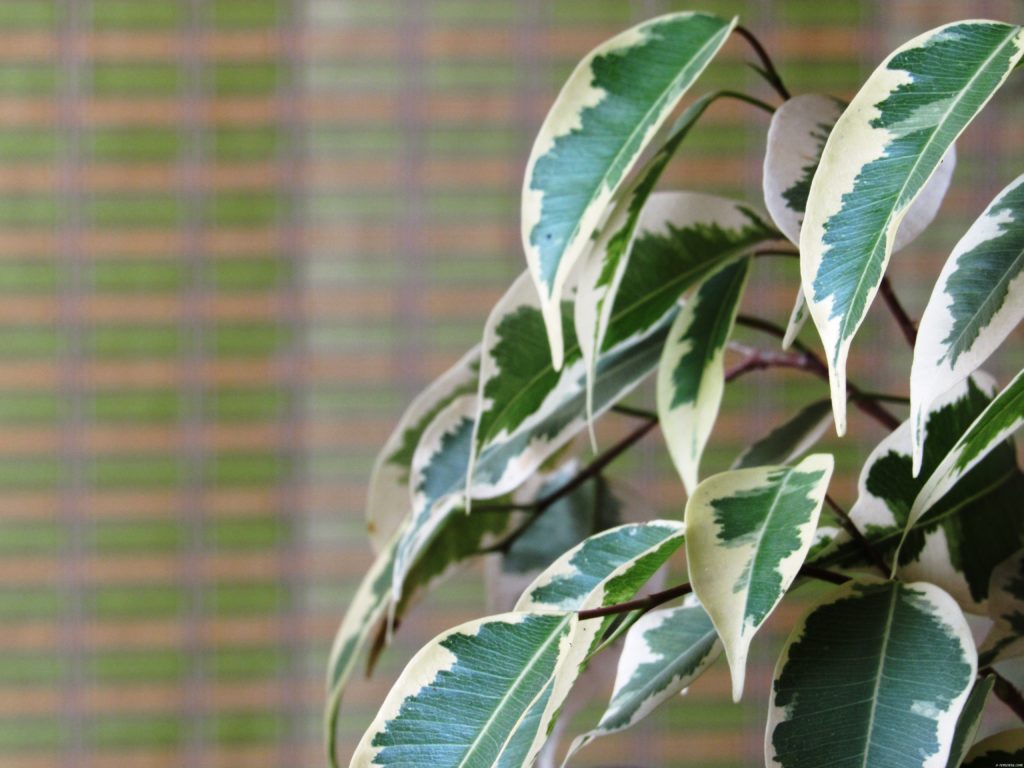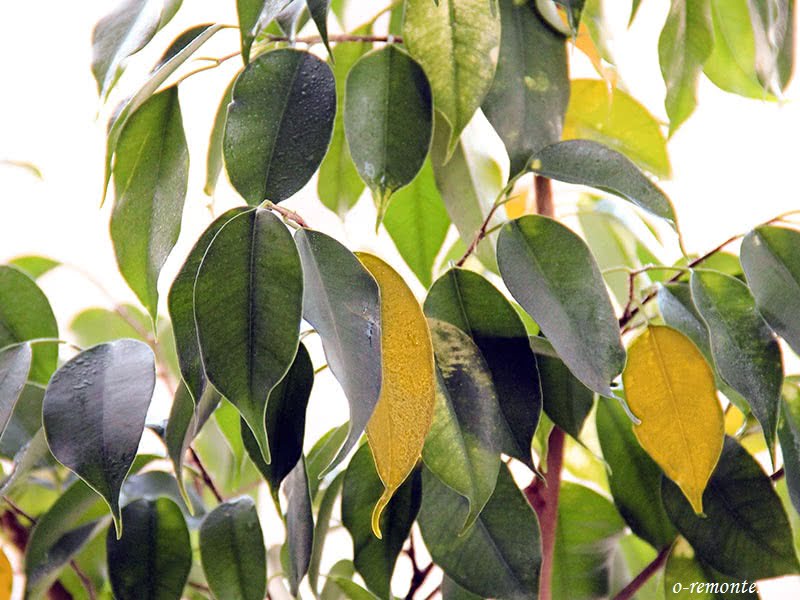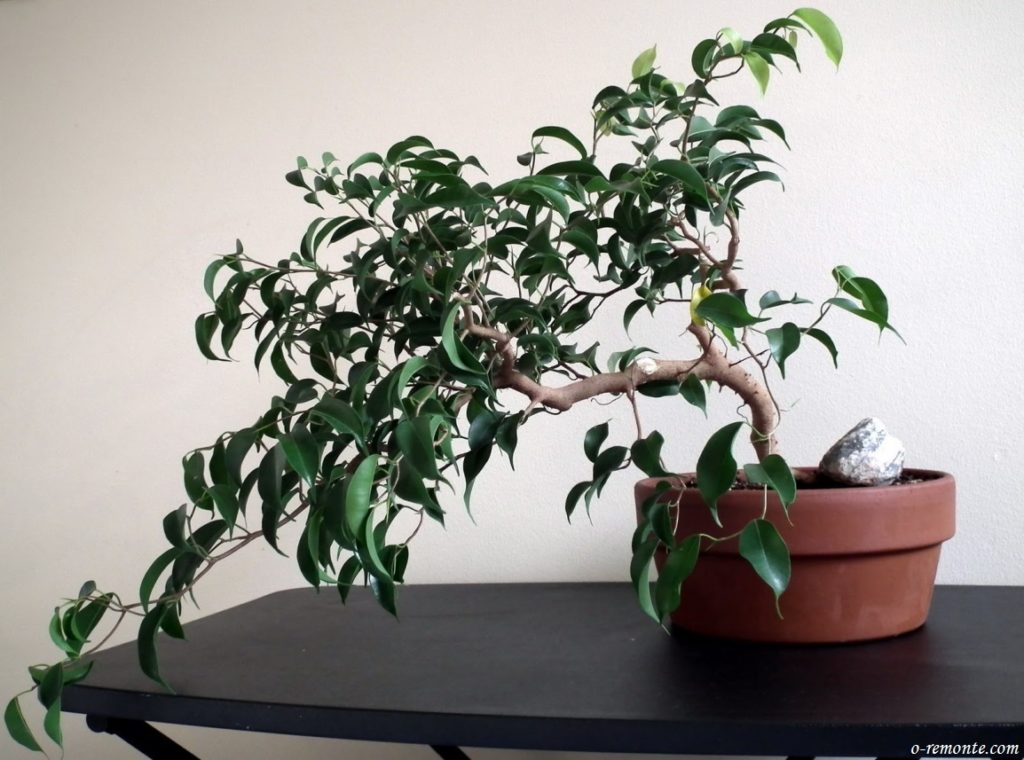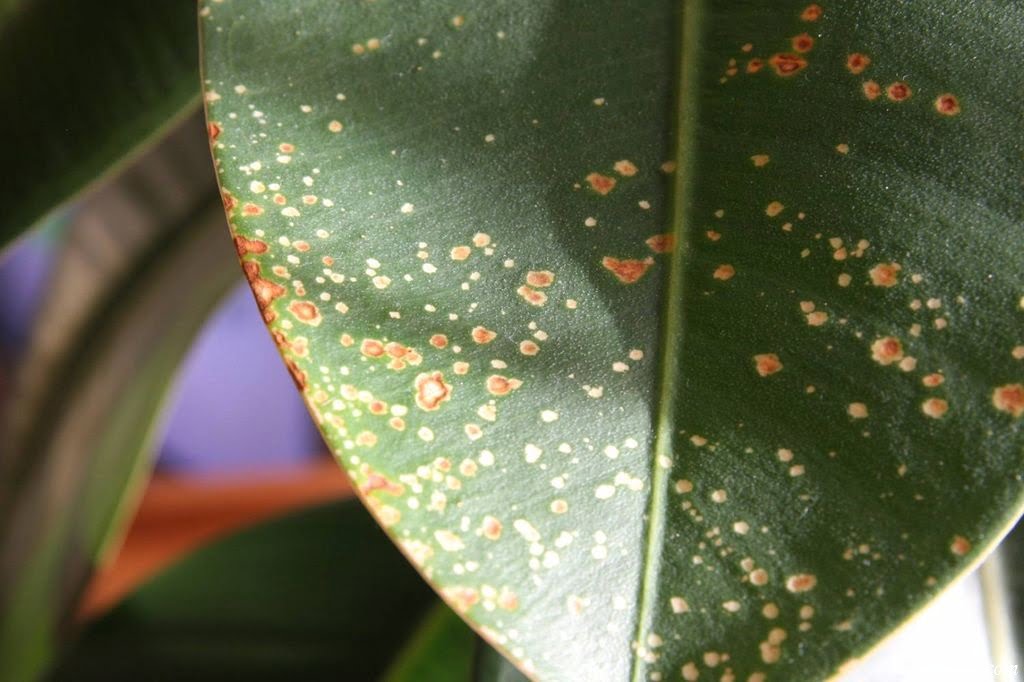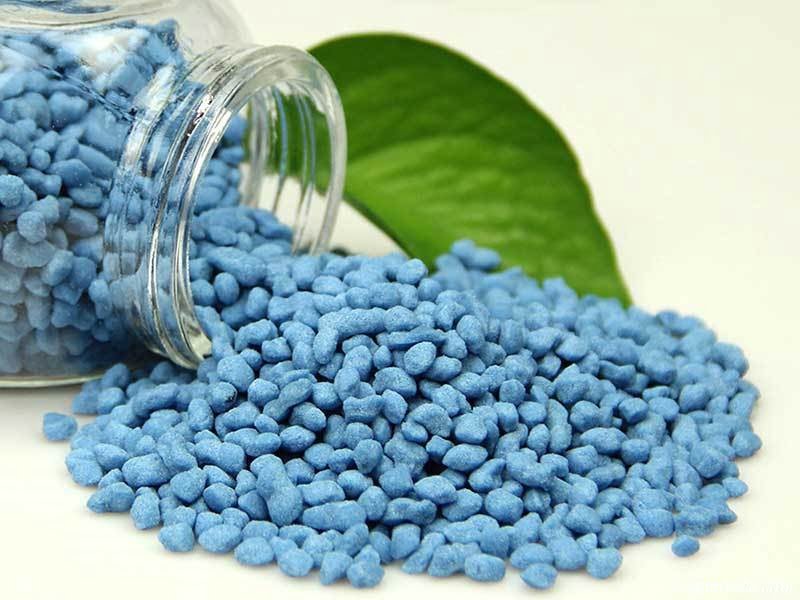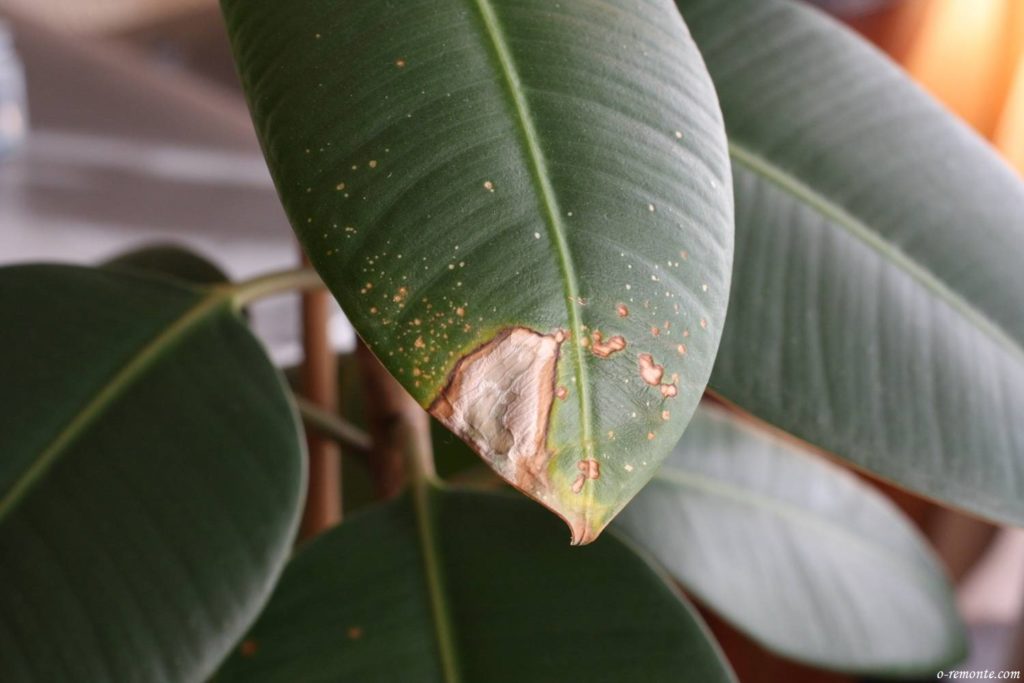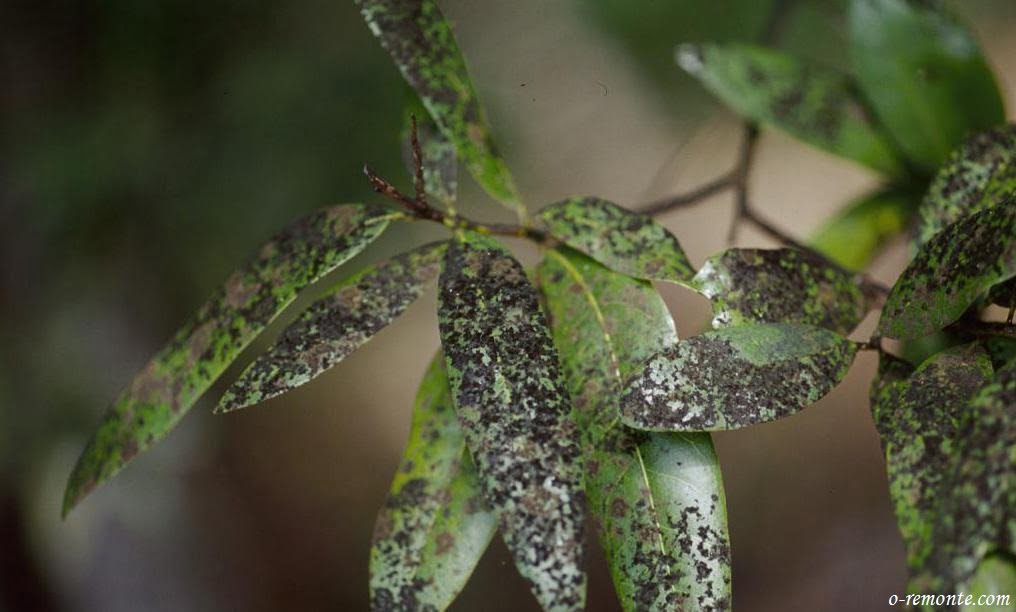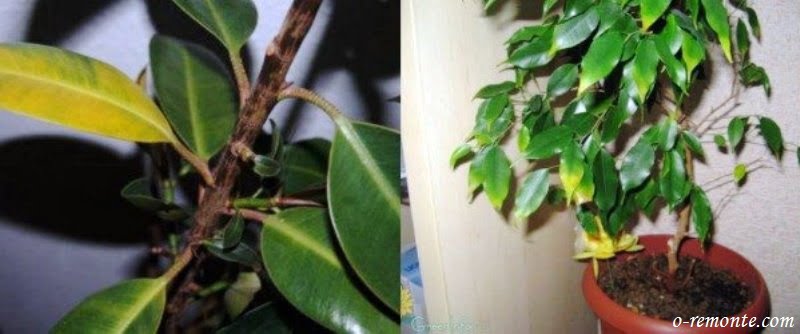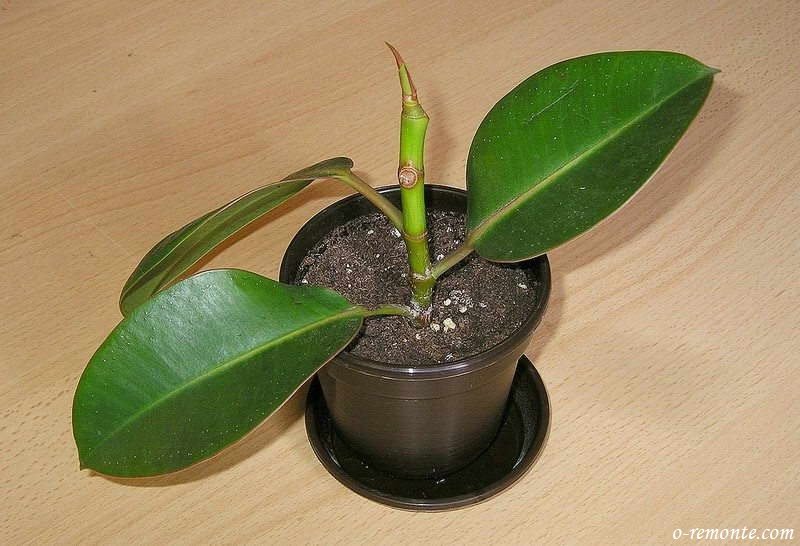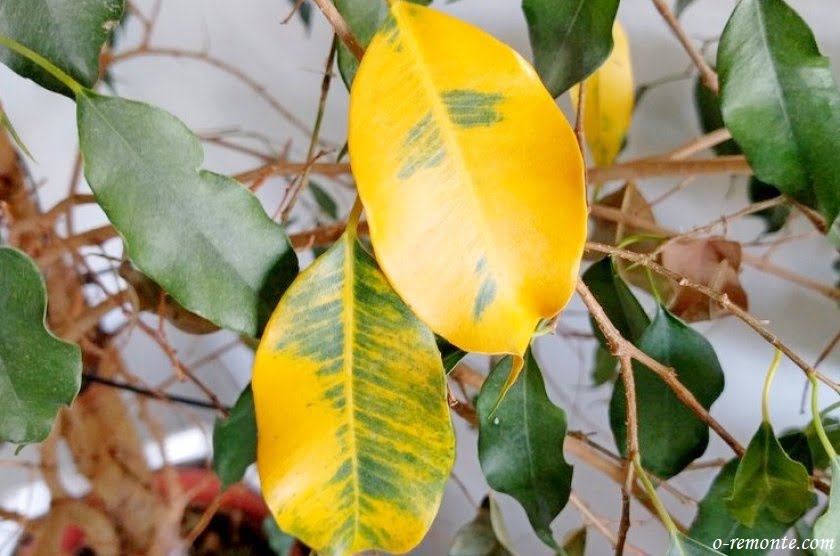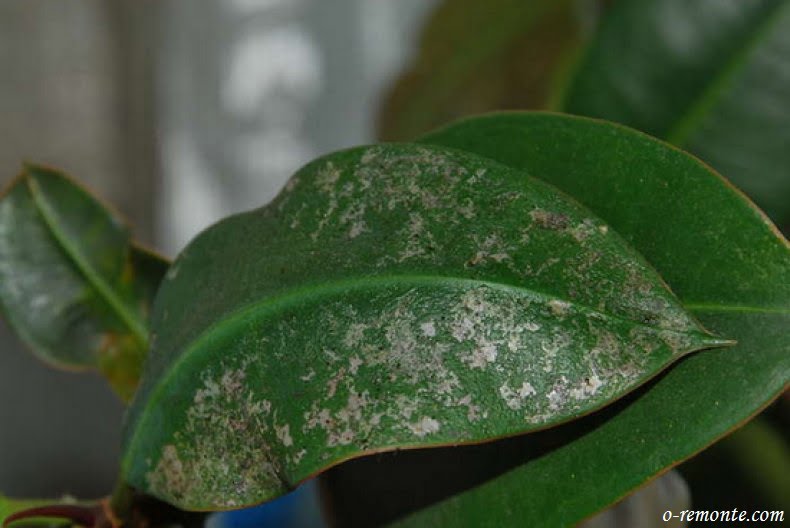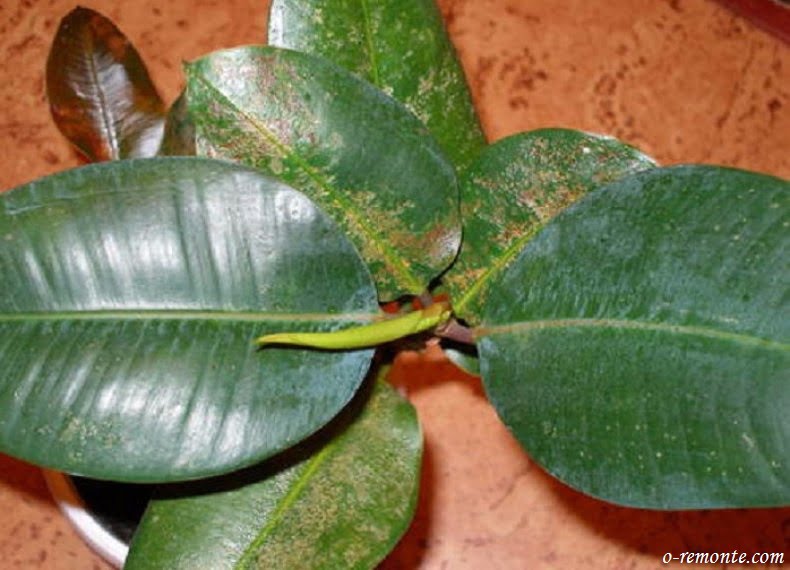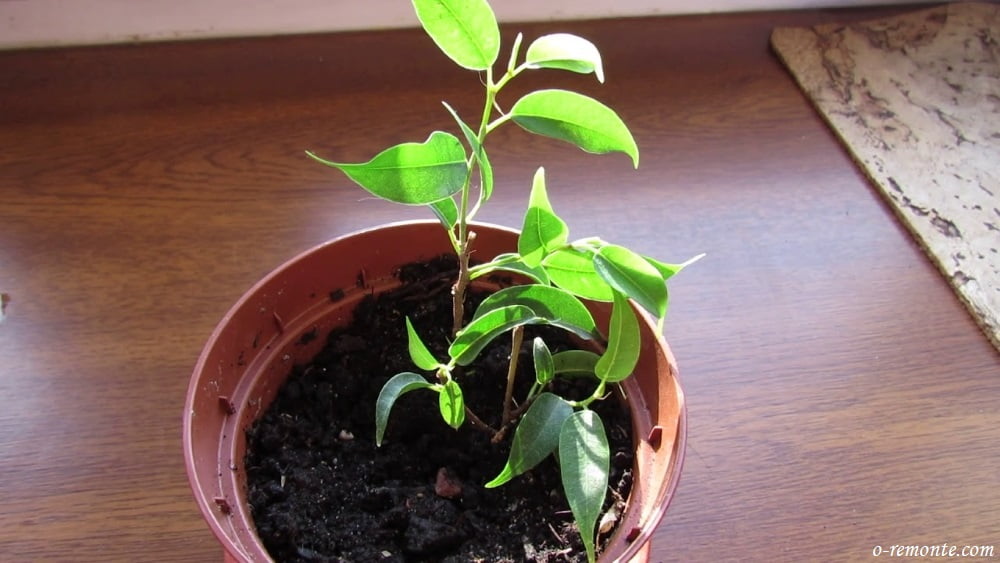Ficus – a plant with a distribution range throughout the tropical belt. Ficus comes in numerous varieties and has been a part of indoor plant collections worldwide for several centuries. Ficus can be a splendid addition to home or office decor if you acquire information about caring for this plant and the visual characteristics of each species.
Ficus – What Is This Plant?
Ficus is one of the largest representatives of the mulberry family. There is a wealth of knowledge about this plant, and it has been extensively studied and described. Its classification into genera, families, species, and subspecies was completed as early as the beginning of the 19th century. However, modern discoveries in the fields of biology, botany, and phylogenetics have challenged the century-old work of colleagues, and they are currently attempting to reclassify all varieties of ficus.
Ficus is so diverse on our planet that describing them is a lengthy and labor-intensive process.
Ficus can take the form of shrubs, vines, trees, and decorative dwarf indoor plants.
Some produce sweet fruit, while others boast beautiful flowers and foliage. There are even those with aerial roots.
Some species of ficus have even become objects of worship in religious movements; for example, the famous fig ficus is sacred in many Eastern religions and philosophical traditions.
Ficus prefer warmth and thrive in bright, indirect sunlight, but their roots are susceptible to rot. Therefore, the pot with your indoor ficus should have a drainage system with stones while avoiding vermiculite as it can harm the soil.
Ficus loves moisture but doesn’t tolerate swampy conditions. So, make sure the soil remains moist but has a chance to dry between waterings.
The ficus genus comprises about 800 species. All species grow rapidly, propagate easily, and are low-maintenance. Therefore, all ficus varieties play a crucial role in restoring the planet’s ecosystem, especially in reforestation efforts in the tropical belt.
Furthermore, their beauty, low-maintenance nature, and diversity have made ficus highly sought-after as indoor plants. They thrive in regular pots and don’t require constant pruning. Even under artificial conditions with minimal care, some ficus varieties can grow up to 2 meters tall; it all depends on the pot size and the amount of light and moisture.
Flowering varieties of ficus not only enchant with their beautiful blooms but also their pleasant fragrance.
In nature, ficus stems and crowns can reach impressive sizes, so these plants have a robust root system. Their roots grow laterally. This characteristic should be considered when choosing a ficus as a household pet, and you should care for the root system.
Is Ficus Poisonous or Not? Harm to Humans and Animals
The latex of the ficus (the milky sap released when any part of the plant is damaged) is poisonous. It poses a danger to all mammals.
Ficus sap can cause allergic skin reactions and can lead to acute poisoning when ingested directly into the stomach or absorbed through the skin pores into the bloodstream.
Poisoning by ficus sap can manifest as skin irritation accompanied by itching, stomach upset, or oral mucosa burns.
Popular Types and Varieties of Ficus with Photos and Names
Ficus can be divided into bushy ficus and ordinary ficus. The most popular types of ficus are represented by these varieties.
Dwarf Ficus Pumila (Ficus Pumila)
A creeping plant that grows in East Asian countries like Japan, Taiwan, and Vietnam.
In the wild, the branches of this ficus can spread up to 4 meters in height and 2 meters in width.
Its leaves have a “heart” shape.
The ficus bears fuzzy fruit in the open air, with ripening indicated by a violet color.
This plant thrives in moisture.
Its natural enemies are bugs and thrips, which can completely destroy all the leaves of Pumila. Therefore, domestic plants used for decoration in outdoor areas are often placed in hanging structures (baskets and pots).
Ficus Benjamin (Ficus Benjamina)
An evergreen species of ficus that can reach heights of up to 25 meters and widths of up to 10 meters in its natural habitat.
It thrives in the tropical regions of India, Australia, and the Philippines.
The branches of this ficus form an arch, with bright green leaves and a light brown bark on the trunk.
In its natural habitat, Ficus Benjamina bears fruit and is resistant to colder temperatures, feeling comfortable at temperatures down to 10 degrees Celsius. It sheds its leaves at lower temperatures. In moderate climates, it is grown as a houseplant.
Petioled or Stone Fig (Ficus Petiolaris)
A ficus native to South America, which in its natural environment can reach heights of 10 meters, but in cultivation, it has become popular as a bonsai.
This ficus has very beautiful, large, heart-shaped leaves with pink veins.
Rubber Plant (Ficus Elastica)
This ficus, also known as rubber fig, hails from the shores of Indonesia.
It is a gigantic tree, growing up to 40 meters in height, with industrial significance as a source of rubber.
The tree does not favor direct sunlight and has natural enemies in the form of aphids.
Its branches are covered with dark green leaves and bracts ranging from pink to violet.
It produces small fruits, about 1 cm in size.
In domestic conditions, this ficus has also found its place but in a decorative size.
Sacred Fig (Ficus Religiosa)
A massive, long-lived tree, with a trunk height of up to 30 meters; some specimens are thousands of years old.
It earned its name from legends in Hinduism and Buddhism. According to legend, it was under such a tree that Siddhartha Gautama (Buddha Shakyamuni) attained enlightenment.
The tree is not prone to attacks from parasites and is resistant to diseases.
It loves direct sunlight and moisture, and it produces purple fruits.
In domestic conditions, it is used as a bonsai.
Fig Tree (Ficus Carica)
The most well-known representative of the ficus genus, known as the fig tree.
This tree grows to large sizes, blooms beautifully, and produces delicious sweet fruits.
Its decorative value for indoor spaces is attributed to its beautiful silvery-gray bark and greenish hue of its flowers.
The roots and fruits are susceptible to rot, and the leaves can be affected by a disease causing spots.
Albert Smith’s Fig (Ficus Albert-Smithii)
This plant originates from Latin America and is characterized by its huge leaves.
Tiger Fig (Ficus Altissima)
This species of ficus is colloquially known as the “Thai tiger.”
It’s a massive tree native to Southeast Asia.
American Fig (Ficus Americana)
This type of ficus can be found from Florida to the Caribbean Islands.
It’s known by the names laurel fig or cherry fig.
Golden Fig (Ficus Aurea)
Like most ficus plants, the golden fig originates from South America.
It’s a massive, evergreen tree that, over centuries, transforms from a bush into a banyan tree.
The ficus attracts attention with several unique features:
- It’s a hermaphroditic tree and capable of self-pollination;
- The shape and color of its leaves constantly change, and the same property applies to its fruits;
- Of particular interest are the discs on the trunk and branches, which are arranged horizontally, creating the impression that the tree is engulfing itself with its own roots.
Elephant Ear Fig (Ficus Auriculata Lour)
This Asian plant has large, round-shaped leaves.
The tree is used in agriculture, and its foliage is used as fodder for domestic livestock.
This ficus loves light but its leaves cannot tolerate direct sunlight.
Florida Spire Fig (Ficus Florida Spire)
A selectively bred variety of ficus for decorative purposes.
The ficus has bright green leaves and a very slender trunk.
Golden Princess Fig (Ficus Gold Princess)
Also a specially bred variety of ficus based on Ficus Benjamina.
Its leaves are very bright, grayish-green with a beige edge.
Jacklin Fig (Ficus Jacklin)
A decorative variety obtained through selection with variegated leaves framed by a khaki-colored rim and a central speck.
Decora Fig (Ficus Decora)
A selectively bred variety derived from the rubber tree (Ficus elastica).
Its distinctive feature is its broad oval leaves.
Doscheri Fig (Corsican dialect without translation)
A ficus with very beautiful multicolored leaves: the petiole (leaf stalk) is pink, the leaves have transitions from green to white and have a tapered shape.
Ruby Fig (Ficus Rubra)
This ficus got its name because of the unusual color of its leaves. The foliage has a rich red hue. The less sunlight the plant receives, the darker its leaves become, eventually reaching a dark burgundy color.
Caring for Ficus in Home Conditions
Ficus is not a very demanding plant and is excellent for home decor. However, domestic ficus also requires attention: its leaves need to be wiped, its roots need to be kept moist, and it should be kept away from drafts.
Conditions for Keeping Ficus
Ideal home conditions for any ficus are:
- Room temperature not below 15 degrees Celsius. Ficus is native to the tropics, so it cannot tolerate cold. If the temperature drops below the acceptable range, the plant will simply die;
- Ficus should be placed in bright indirect light. If natural lighting is insufficient, this effect can be achieved with special lamps. Insufficient light will cause the ficus leaves to wither and fall off, while excess light will cause the crown to grow at an incredible rate, which does not correspond to the criteria of a houseplant. Ficus is comfortable on a windowsill with bright sunlight filtered through a sheer curtain;
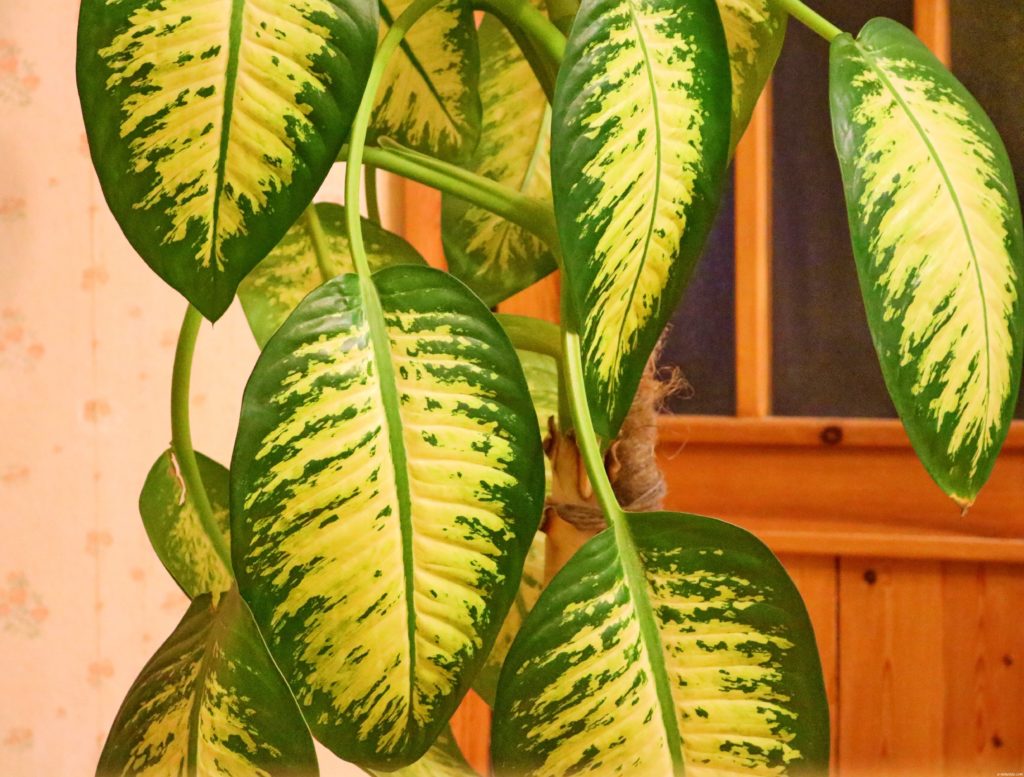
- Regular but not excessive watering. Excessive watering can lead to root rot due to the growth of mold. Therefore, it is not necessary to water or otherwise overmoisten the ficus. The soil needs time to dry out. You can check the soil moisture with your finger or a soil moisture meter – if the top layer (about 3 cm) is dry, you can water the plant. In cold weather, ficus should be watered less frequently. Use room-temperature water for watering;
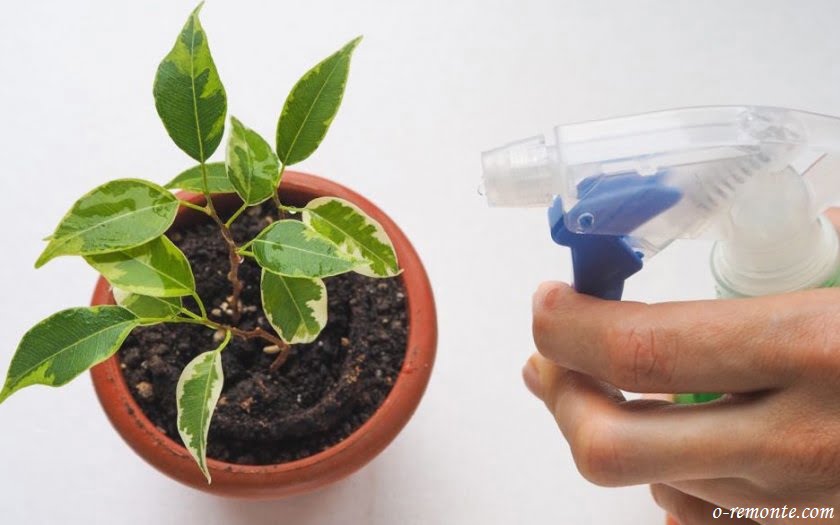
- The humidity in the room where the ficus is located should remain around 60%. In warm weather or in the appropriate climatic zone, maintaining this level of humidity is not a problem. However, during cold weather and artificial heating, the air in the room becomes dry. To achieve the desired humidity, you can use air humidifiers, place containers with water near the pot, or mist the ficus leaves with a sprayer.
Soil and Fertilization
Care is required not only for the plant itself but also for the soil in which it grows, as ficus derives its nutrients from the soil. Therefore, the soil in the flower pot needs to be enriched with fertilizers. Fertilization comes in a wide range of options, including organic and mineral fertilizers, as well as ready-made liquid complexes. This procedure should be performed every 3 months during the warm season and monthly during the cold season, with a reduction in the recommended dose by the manufacturer by 3-4 times.
In home conditions, you cannot do without soil fertilization. The soil for indoor plants is almost sterile, as it does not contain worms, bacteria, or microorganisms. Moreover, purified water, when it drains through the drainage, washes away all the necessary nutrients and microelements from the soil.
Granular fertilizers containing phosphorus, nitrogen, and potassium in a ratio of 1:2 are a good solution for fertilization. There are ready-made balanced fertilizers (with a 10:10:10 formula) that dissolve in water and are poured into the pot.
Pruning a Ficus Plant
Many amateur gardeners, when decorating indoor spaces with houseplants, often overlook crucial procedures like pruning and trimming. As a result, indoor plants quickly lose their attractive appearance.
However, for a domestic ficus plant, this procedure is extremely important. It’s thanks to pruning that the indoor tree takes on the correct form and develops a beautiful canopy.
Pruning of ficus branches should be done exclusively in winter when all the vital systems of the tree are in a state of dormancy. It’s crucial to perform pruning correctly, paying special attention to small branches where nodes have formed. Even a minor injury to the parts between these nodes can lead to the complete death of the branch.
When pruning is done correctly, the tree sheds some leaves but quickly develops new and lusher foliage.
Regular and proper pruning not only prolongs the life of the ficus but also helps address several issues:
- It shapes and controls the plant’s height and parameters.
- It aids in achieving the desired height and creating a lush canopy.
- It allows lower parts of the tree to receive sunlight and moisture.
- It eliminates dead, infected, and unhealthy leaves.
Branches located inside the canopy of a light-loving ficus die off first because they are constantly in the shade, which is a natural irreversible process. Therefore, these branches should be cut first during pruning. These branches do not grow to full size; they are thin and weak. They only harm the ficus as they draw essential nutrients from the soil. This is why even live branches should be removed promptly.
The external canopy of the ficus should also be adjusted. Trim back the interweaving branches (canopy) by about one-third in a circular pattern. This significantly reduces the canopy, but the branches will grow faster, and the canopy will quickly become large and lush. Some branches may grow in a different direction from the others, altering the canopy’s shape. These branches should be pruned gradually, moving towards the center of the canopy.
Roots should only be pruned in exceptional cases, typically when they are damaged (rot, fungus, parasites, infection) and pose a threat to the entire tree’s survival.
The rules for proper ficus pruning are as follows:
- Pruning is done from the dead part toward the healthy part to avoid injuring the tree. Use pruning shears or scissors to cut the branches, never break them off.
- If the ficus is flowering and has buds on its branches, to prevent rot, cut the branch close to the bud.
The lower terminal bud of the branch promotes stronger growth compared to the lateral bud.
When the tree begins to enter a dormant state, leaf fall is a natural process. As the leaves start to fall in late autumn, reduce watering and begin pruning. The ideal time for this procedure is late winter. However, if the tree has shed all its leaves, it may indicate that the ficus requires urgent attention.
Therefore, it’s not advisable to prune the tree immediately at this point; instead, identify and address the cause of this phenomenon. After identifying the factor causing leaf drop, you can trim the branches, removing about one-third or one-fourth of their length. However, do not trim the central branch with the shoots.
Repotting a Ficus Plant
One of the essential care procedures for a ficus plant is repotting. Ficus doesn’t tolerate changes well, and even a change in the pot’s location can cause discomfort to the plant. Therefore, it’s crucial to handle your ficus only when absolutely necessary, and repotting should be done following clear guidelines. Only in such cases will these actions benefit the tree.
In most cases, repotting becomes necessary due to the growth of the tree and, consequently, its root system. Monitoring the ficus’ roots helps determine when it’s time to change its “place of residence.”
When it appears visually that the flowerpot is filled with soil, it’s a signal that the ficus roots have grown, and it’s time to move the tree to a larger container.
To repot, first, carefully remove the ficus from the pot, along with the soil. The tree’s roots should be gently cleaned of soil and rinsed with water.
Examine the clean roots closely for any damage or rot. If any part of the root system is affected, it should be removed. To prevent new infections, sprinkle each cut with activated charcoal powder.
The new pot for the ficus should be only a few centimeters larger than the previous one. Initially, the bottom of the pot should be covered with drainage material (not clay shards!), and a couple of centimeters of new soil should be added on top. The ficus roots should be positioned about 2-3 centimeters above the container’s bottom; this should be taken into account when forming the bottom layer in the pot. Once the bottom layer of the pot is prepared, the ficus can be placed in its new home, with the roots covered by fresh soil.
The soil around the ficus roots should not be compacted; otherwise, the plant won’t be able to breathe. With proper watering, the soil will compact naturally, providing a comfortable environment for the tree.
Repotting into a larger pot is necessary if you want the tree to grow significantly in size. As the trunk grows, so does the root system, requiring more space. However, if the ficus has reached the desired size, there’s no need to transplant it into a larger pot. Instead, measures should be taken to control its growth.
To achieve this, the same procedure as for repotting is followed: the tree is removed from the pot, the roots are cleaned, pruned, and disinfected, and then the ficus is returned to its pot, but with fresh soil.
If, during the examination of the root system, you find that the roots have begun to intertwine and encircle the root ball, they should be carefully untangled with your fingers, not cut. Only damaged or dead roots should be pruned with pruners. About one-third of the length of each root should be removed.
You can tell that the roots have outgrown the pot when the drainage holes are blocked by the roots.

It’s entirely normal for the ficus to drop leaves after root correction and repotting; this is a natural reaction to the stress of the operation. However, the tree will soon produce new, beautiful leaves.
Not all ficus varieties enjoy space, so the plant’s roots should be about 2 cm away from the container’s edges.
Repotting should be done exclusively in cool seasons indoors. Outdoor air and hot weather can lead to the death of the ficus after repotting.
Ficus thrives in any soil, with the only requirement being soil sterility.
The most important aspect for ficus is drainage. You can check its quality easily: drainage is done correctly if water is completely absorbed by the soil within twelve hours. If the water remains in the pot for more than a day, it indicates inadequate drainage.
Methods of Propagating Ficus
In home conditions, there are several methods for propagating ficus plants, each of which should be considered separately.
Propagation by Stem Cuttings
This method of propagation is carried out during the warm seasons, such as spring or summer. It is in this period that the root system develops quickly, and the plant actively grows.
A young branch is cut, measuring between 10 to 15 cm in length, and all leaves are removed from it. The cutting will start producing sap at the cut site, so you should wait for the sap to stop flowing (about half an hour). Afterward, the cutting should be thoroughly washed to remove the sap.
The soil mix for propagation consists of a blend of perlite, peat, and sand. All prepared cuttings are planted in containers with this soil mix and covered with plastic film to create a mini greenhouse with a greenhouse effect.
The temperature inside the mini-greenhouse should be maintained at 25 degrees Celsius.
The time it takes for the cutting to develop roots depends on the type of ficus. For example, ficus varieties with green leaves tend to develop roots faster than those with variegated leaves. You can also grow roots on cuttings in water with the addition of a growth enhancer, and in a couple of weeks, the cutting will start producing roots.
Propagation by Leaf Cuttings
Some varieties of ficus can be propagated by leaf cuttings in home conditions. This should be done in the spring so that by winter, you will have a strong young ficus plant with a robust root system.
The process of propagating ficus by leaf cuttings includes the following steps:
- Cut a leaf with a node from the plant, and make a slanted cut just below the node, which is where the roots will develop.
- Submerge the leaf in water for 60 minutes to allow all the sap to come out. Afterward, place the leaf in a liquid solution with a growth stimulant.
- To prevent the leaf from losing moisture, roll it up like a tube and tie it to maintain its shape.
- After the first roots appear, plant the leaf in a container with soil so that the roots are in the soil while the cutting remains above the surface. Water the cutting thoroughly, spray it with water from a spray bottle, and cover it with plastic film to create a mini-greenhouse.
- With temperature conditions in the mini-greenhouse between 25-28 degrees Celsius and humidity of at least 80%, the leaf should develop new shoots within 30 days.
Air Layering Propagation
This method of propagation is suitable when the main stem of the ficus plant is exposed.
In this case, make cuts in the stem every 3 cm and remove the bark from the cut area. Apply a rooting hormone (like Rootone or indole-3-butyric acid) to the cut, and then apply a thick layer of sphagnum moss. Afterward, water the cut well with a spray bottle and tightly wrap it with plastic film.
You should regularly check the condition of the moss for moisture and repeat the moistening process as needed. After some time, roots will start to grow within the moss. When they reach a suitable size and have the strength to break through the plastic film, you can transplant them into a separate container for further growth.
Propagation by Seeds
Obtaining suitable ficus seeds for cultivation can be quite challenging, which is why this method of propagation is not very popular in home conditions.
However, it is possible to grow ficus from seeds:
- Prepare a soil mixture using sphagnum moss and peat. The soil should remain consistently moist.
- Cover the container with the seeds with plastic wrap. Once the first seedlings appear, transplant each one into a separate container. Modify the soil formula to a mixture of sand, perlite, and peat for the seedlings.
- For the young seedlings to develop a strong root system, they require the same conditions as adult ficus plants: diffused light, humidity, good watering in hot and dry weather, and moderate watering in colder conditions.
- To shape the future crown, pinch the upper shoots, leaving several nodes.
It takes around 6 years for a seed-grown ficus to become a mature houseplant with a lush canopy.
Propagation by Root Division
This is one of the most commonly used methods of propagation, often employed by experienced indoor plant growers.
During transplanting or root system adjustment of an adult ficus plant, a healthy, substantial root is cut off. All cuts should be disinfected with activated charcoal powder.
One root shoot can be divided into several cuttings. Each cutting is planted in soil so that a portion of it remains above the ground by a few centimeters, watered generously, and covered with plastic film.
After several months, leaves will start to appear on the cutting. At this point, you can remove the film and acclimate the ficus to natural conditions.
Signs of Ficus Plant Illness
The condition of a ficus plant can be discerned from its foliage. If the plant is unwell, has been attacked by parasites, or is unhappy with its growing conditions, you may notice the following signs on its leaves:
Spots may appear on the leaves.
The color of the leaves may change to something atypical for the species.
A powdery residue may regularly appear on the leaves, even after wiping them.
If the old leaves turn yellow, and the new ones look very small, it indicates a lack of nutrients in the soil, and the ficus is depleted. This symptom can also arise from overwatering and improper watering techniques.
Brown spots on the leaves and their yellowing may be due to sunburn from direct sunlight or excessively high indoor temperatures.
The health of a ficus can be understood by examining the color of its leaves. If the leaf color matches the typical appearance of the ficus species, the tree is generally healthy. For example, new leaves should be light green, while mature leaves should be dark green.
If the ficus has been moved to a different location – from a well-lit spot to a slightly shaded one, for instance – the leaf color may become less saturated. Changes in leaf color do not necessarily indicate illness; it is normal for all ficus plants. The only concern is if the leaves turn yellow and start falling off.
Improper watering that leads to waterlogged soil can result in all-age leaves becoming pale green. To restore the appropriate soil moisture for the ficus, allow the soil to completely dry out for 7-8 days. Similar changes in leaf color can be observed when there’s a lack of fertilization – this is an indication that it’s time to fertilize the soil.
Every unusual behavior of the plant should be studied individually to identify the cause of its “discontent.”
Diseases and Pests
Ficus plants are generally resistant to most pests both in their natural habitat and in cultivation. However, there are certain types of pests that can harm the plant. The presence of harmful insects infesting a ficus, like any other issue with a ficus, can be observed through its leaves. Because these pests sap the plant’s juices, the leaves lose their color, become pale, turn yellow, curl into tubes, and fall off.
Apart from pests, ficus plants can also express their displeasure due to other care-related issues:
- Excessive direct sunlight can lead to changes in leaf color and structure. The leaves may become light green, and the edges of the leaf blade may curl upward, creating a wavy appearance. Therefore, it’s important to remember that ficus prefers indirect light;
- Excess moisture will manifest as small reddish spots on the inner and outer sides of the leaves. Typically, this problem arises due to improper drainage in the ficus container: water does not drain in time, and the roots start to rot, depriving the tree of essential nutrients. To help the plant, reduce the frequency of watering and allow the soil to dry thoroughly. If the ficus doesn’t recover, it’s best to consider repotting, trim the affected root parts, and improve the drainage system in the pot;
During the cold season, when the ficus goes into a dormant state, watering should be significantly reduced.
- Soil salinity: If the ficus stops growing, and the leaves turn an unnaturally dark green, it indicates that the soil is oversaturated with fertilizers. In this case, due to an excess of salts, the root collar begins to dry out and eventually dies. To assist the plant, soil leaching is necessary;
- Deficiency of micronutrients is reflected in the varied shades of leaf colors among leaves of different ages: young leaves turn pale green, while old ones become very dark. The growth of the ficus slows down, and it stops producing new shoots. In this case, adding a micronutrient supplement to the soil can help enrich it;
The foliage will once again reveal the specific nutrient that the plant is lacking.
For example, a potassium deficiency will cause lower leaves to suffer from marginal chlorosis and necrosis. In such cases, potassium chloride and nitrate should be added to the soil.
A lack of magnesium leads to chlorosis in the lower leaves, especially near the leaf base. In this case, magnesium sulfate is added to the soil.
Interveinal chlorosis indicates a lack of manganese. In this case, manganese sulfate acts as a remedy for the ficus.
Ficus Diseases
Ficus plants can suffer from bacterial infections. The most common disease is caused by gram-negative bacteria, specifically Agrobacterium tumefaciens. This type of bacteria induces hormonal changes and disrupts cell division, resulting in the formation of malignant tumors on the plants.
These tumors develop on the veins of leaves, stems, branches, and roots. These growths increase in size, fuse together, and form a solid mass. The consequence of this disease is a disfigured stem and root system.
It’s impossible to eliminate bacterial infection since there is no substance capable of destroying Agrobacterium. A ficus infected with gram-negative bacteria should be disposed of, along with the soil and pot it was in.
Another dangerous disease for ficus is an infectious condition called “leaf spot disease.” This infection is common in ficus species such as Benjamin and their hybrid varieties.
It manifests as a peculiar “water blister” on the leaves. A bright yellow rim forms around the swollen area. These blisters can grow and, in advanced stages of the disease, spread throughout the entire plant. When leaf abscesses first appear, the affected areas should be promptly removed. Leaf spot disease can be prevented by using copper-based bactericides for preventive purposes.
Ficus plants are also susceptible to fungal diseases. Often, the plant is attacked by ascomycete fungi, leading to a condition known as anthracnose. Leaves of the affected plant become covered in raised brown spots. During warm weather, fungal spores start multiplying along leaf veins, creating a sort of rash on the ficus leaves. To avoid fungal diseases, strict adherence to ficus care guidelines is essential.
Diseases can also be caused by oomycetes, which are parasites. These microorganisms cause a condition known as “gray rot.” It presents as large, rapidly spreading brown spots on the leaves. Ficus species like Elastica are more susceptible to this disease during the cold months of the year.
Another common ailment among ficus plants is cercosporosis. It is caused by imperfect fungi known as cercosporae. This disease results in tissue decay and is characterized by small, round spots surrounded by a red-brown border. The spots themselves have a brown or greenish-gray color. The disease spreads quickly and affects the entire plant. To get rid of this ailment, insecticides are used.
Pests
The most harmful insects for ficus plants are mites, thrips, fungus gnats, and aphids. These insects can even infest indoor plants.
To prevent insect attacks, it is necessary to treat the trees with pesticides. As a preventive measure, you can use soap and alcohol solutions.
Microscopic colorless worms called leaf nematodes can also cause the death of the plant. They can be identified by rectangular yellowish spots on the leaves. These worms suck the life juices from the root system, causing it to rot. When the root node is destroyed by the worms, the tree not only stops growing but may also die. These parasites live in the soil and can be found in the seeds and sprouts of weeds. Therefore, it is crucial to provide ficus plants with sterile soil.
Mealybugs, also known as woolly aphids and pseudococcidae, are small insects from the order Hemiptera. The presence of these insects in the house may also result from poor-quality soil. You can identify them by the white coating on the roots and leaves.
Sudden fluctuations in temperature and humidity can lead to the appearance of honeydew and mold on ficus plants. Apart from the unpleasant sticky slime on the leaves, this condition can cause growth cessation and the death of the plant.
The attack of thrips on ficus plants causes their leaves to become wavy or rolled up like a tube. Where thrips have sucked the sap, scars of gray-silver color remain. Pesticides and fungicides can help combat thrips.
Abundant sap secretion from the leaves also indicates an insect attack. Mites can greedily suck the sap from ficus plants. These parasites can be eliminated using special horticultural oils or fungicides.
Not uncommonly, small white spots similar in texture to wax can appear along the edges of ficus leaves. This white coating appears suddenly and disappears on its own. This phenomenon is not related to disease or pests and does not pose a threat to the plant. It is simply a natural process of the ficus getting rid of accumulated minerals.
Read our special article about all popular house flowers and plants Indoor Plants: Names and Photos with Descriptions.
